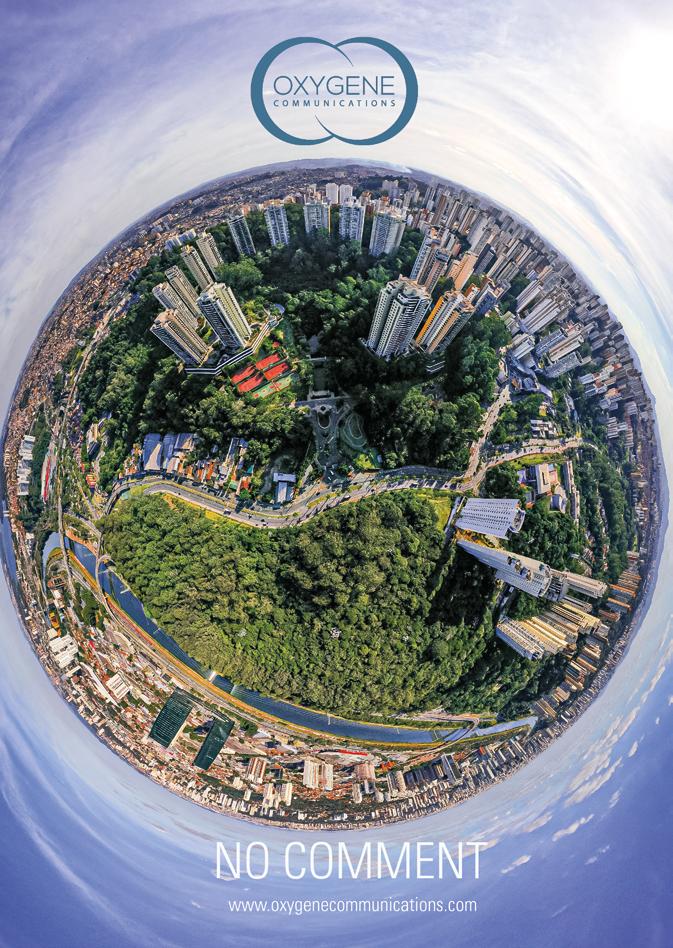
















The Ministry of Transportation's announcement of the Active Travel Strategy in Gibraltar is wonderful news. By establishing the idea of "A 15min City" a daring and important proposal for a greener Gibraltar and commitment to protecting out environemnt is made clear.. The first interventions will start in a few weeks, and in the following OTWO, we'll extend this information with an exclusive interview with the Transport Minister himself.
If our longed Bruno Latour dreamed of the emergence of a new social class more conscious, not only with the defense of nature, but with life on this planet, the initiative being made by the John Mackintosh Library with its "Collection of Resources for Sustainability" becomes one of the best influences to achieve it, Daniella Tilbury, Commissioner for Sustainable Development and Future Generations,explains more about it in this issue.
This month, the Association of Environmentalists of Andalusia, gives us an interesting report on the plans that will lead to a more environmentally friendly tourism as it is a major sector in the necessary transformation of the economy.
And as I write this editorial, I remember what the great Portuguese poet Fernando Pessoa said: "The best way to travel is to feel". This is the feeling that readers of our particular "The Italian Experience" will have with the double lyricism that makes up the protean and descriptive writing of Anthony Pitaluga and the exuberant Venice. Travel as an expression of culture, almost nothing.
Juanlu González —what a luxury of a collaborator— recovers from the history of the Strait another character that we will fall in love with: Sidi Al Mandri, from Granada and Tetuaní, as this is the title of this issue. And although the author tells us that this story, someday, should be told better, we hope to be able to enjoy it in this —your— magazine. We always say that OTWO is a living organism, and there is no better demonstration than browsing through the pages of our sections. In them you will find the second installment of Dr. Owen Wiseman's journey through nature and how planting trees can be the right way to save us. Keith Bensusan introduce this month's plant, the beautiful Rockrose, whose leaves remind us of the texture of paper, and our friends at Clubhouse Minds do a much more supportive extension of Valentine's Day. I can't help but extract the following text: "to serve to unite lost souls, family and friends, not just to have a partner and give gifts or give chocolate and flowers".
I won't go any further, it's enough that our Managing Director, Vanessa, asks me to write this month's editorial —she is immersed in important projects that will soon be published in our favorite magazine— for this literary vein that I keep trying to repress to escape me. So unlike her, I don't send kisses and wishes for peace, I'm much more prosaic, I'm content for you to go to the nearest bookstore and buy a book. Or two.
Que gran noticia la que nos ha regalado el Ministerio de Transporte presentando la Estrategia de Desplazamiento Activo en Gibraltar. Se articula desarrollando el concepto de «Ciudad en 15 minutos», una valiente y necesaria propuesta por un Gibraltar más verde y comprometido con el medio ambiente. En pocas semanas comenzarán las primeras intervenciones y en el próximo OTWO le desarrollaremos esta información con una entrevista al Ministro de Transportes.
Si nuestro añorado Bruno Latour soñaba con la aparición de una nueva clases social más consciente, no ya con la defensa de la naturaleza, sino con la vida en este planeta, la iniciativa que está haciendo la Biblioteca John Mackintosh con su «Colección de Recursos para Sostenibilidad» se convierte en una de las mejores influencias para conseguirlo , nos lo cuenta en este número Daniella Tilbury, Comisaria de Desarrollo Sostenible y Generaciones Futuras.
Este mes, el Colegio de los Ambientólogos de Andalucía, nos entrega un interesante reportaje sobre los planes que llevarán a un turismo más respetuoso con el medioambiente ya que es un sector de primer orden en la necesaria transformación de la economía.
Y mientras escribo este editorial, me acuerdo de lo que decía el gran poeta portugués, Fernando Pessoa: «La mejor manera de viajar es sentir». Pues esa sensación tendrán los lectores de nuestro particular «La experiencia italiana» con ese doble lirismo que conforman la proteica y descriptiva escritura de Anthony Pitaluga y la exuberante Venecia. El viaje como expresión de cultura, casi nada.
Juanlu González —que lujo de colaborador— recupera de la historia del Estrecho a otro personaje que nos enamorará: Sidi Al Mandri, granadino y tetuaní, como así titula esta entrega. Y aunque el autor nos comenta que esta historia, algún día, debería ser contada mejor, esperamos poder disfrutarla en esta —tuya— revista.
Siempre decimos que OTWO es un organismo vivo, y no hay mejor demostración que hojear las páginas de nuestras secciones. En ellas encontraremos la segunda entrega del Dr. Owen Wiseman en su camino por la naturaleza y cómo el hecho de plantar árboles puede ser una forma correcta de salvarnos. Keith Bensusan nos presenta a la planta de este mes, la hermosa Jara, cuyas hojas nos rememora la textura del papel, y nuestros amigos de Clubhouse Minds hacen una extensión mucho más solidaria del Día de San Valentín. No puedo evitar extraer el siguiente texto: «servir para unir a las almas perdidas, a la familia y a los amigos, no sólo para tener pareja y hacer regalos o regalar chocolate y flores».
No me enrollo más, basta que nuestra Directora Gerente, Vanessa, me pida que este mes escriba el editorial —ella está inmersa en importantes proyectos que pronto verán la luz en nuestra revista favorita— para que se me escape esta vena literaria que continuamente intento reprimir. Así que a diferencia de ella, no envío besos y deseos de paz, soy mucho más prosaico, me conformo con que os acerquéis a la librería más cercana y compréis un libro. O dos.
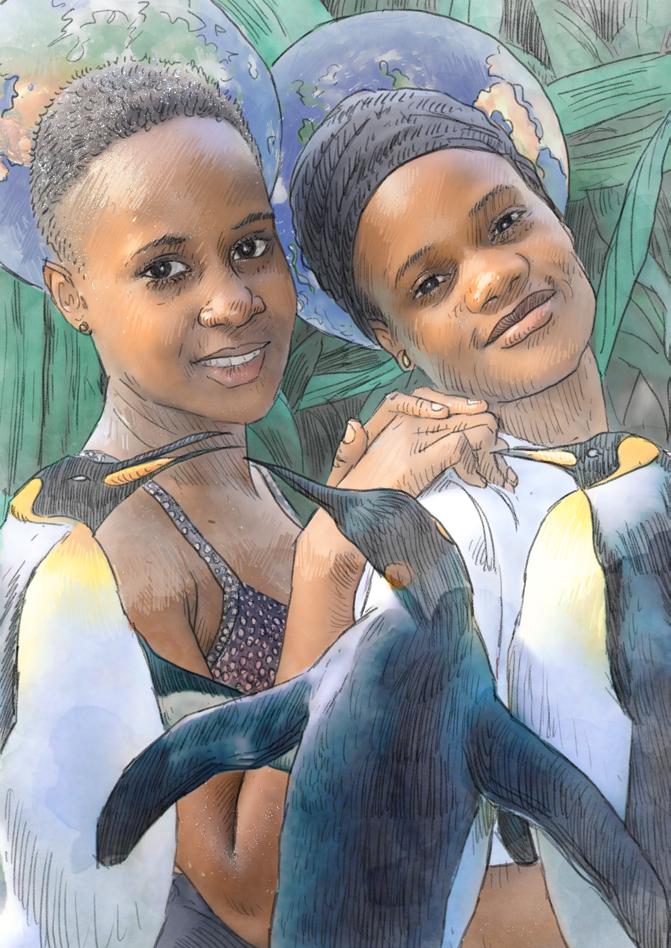

Alameda Wildlife Conservation Park (AWCP)
Gibraltar, has announced a new digital platform and app to help further promote the wonderful work it does, assist in the park's operations and to continue providing hours of enjoyment for visitors of all ages from around the world.
Spearheaded by AWCP manager Jessica Leaper, the park has partnered with n-gage.io, a company based in the North East of England, to develop an innovative audience engagement platform together with an interactive visitor experience app. The aim of the platform is to support the park’s many initiatives and objectives such as education on endangered species, help raise much-needed awareness as well
as increase visits, donations, and other support for AWCP
It will also help streamline the management and operational tasks for the park's small team and increase visitor engagement through QR codes linked to park, animal and exhibit information and include perks such as vouchers with special promotional offers for visitors. It will also allow AWCP to build on school and education offerings and campaigns
In a press release, Leaper explains the park's philosophy and remit to educate and conserve, “We are a small park with a big message. A small space, with big ideas and small actions, sparks bigger results.”
Regarding the new platform she continued, “What stood out most, was the app’s ability to do all the things we really struggle to find the time to perform but that are essential for the everyday operations and sustainability of the park”.
“Our conservation message is paramount to us, and I believe that through this app we will be able to convey this information as well as reach more influencers who can help change the way people see things.”
The AWCP, which began in the 1990s, is a small wildlife conservation park and home to a variety of exotic animals, confiscated or unwanted pets and endangered species.
Opened to the public in 2003, the now internationally famous menagerie has grown to become an international member of BIAZA and one of the officially recognised smallest zoos in the world.
Alameda Wildlife Park se embarca en un viaje de transformación digital
Alameda Wildlife Conservation Park (AWCP) Gibraltar, ha anunciado una nueva plataforma digital y una app para ayudar a promocionar aún más el maravilloso trabajo que realiza, ayudar en las operaciones del parque y seguir proporcionando horas de diversión a visitantes de todas las edades procedentes de todo el mundo.
Encabezado por la directora de AWCP, Jessica Leaper, el parque se ha asociado con n-gage.io, una empresa con sede en el noreste de Inglaterra, para desarrollar una innovadora plataforma de participación del público junto con una aplicación interactiva de experiencia del visitante. El objetivo de la plataforma es apoyar las numerosas iniciativas y objetivos del parque, como la educación sobre las especies en peligro de extinción, ayudar a aumentar la tan necesaria concienciación, así como incrementar las visitas, los donativos y otros apoyos a AWCP.
También ayudará a agilizar la gestión y las tareas operativas del pequeño equipo del parque y aumentará la participación de los visitantes mediante códigos QR vinculados a información sobre el parque, los animales y las exposiciones, e incluirá ventajas como vales con ofertas promocionales especiales para los visitantes. También permitirá a AWCP aprovechar las ofertas y campañas escolares y educativas.
En un comunicado de prensa, Leaper explica la filosofía del parque y su misión de educar y conservar: «Somos un parque pequeño con un gran mensaje. Un espacio pequeño, con grandes ideas y pequeñas acciones, provoca grandes resultados».
En cuanto a la nueva plataforma, continuó: «Lo que más destacó fue la capacidad de la aplicación para hacer todas las cosas para las que realmente nos cuesta encontrar tiempo, pero que son esenciales para el funcionamiento diario y la sostenibilidad del parque».
«Nuestro mensaje de conservación es primordial para nosotros, y creo que a través de esta app podremos transmitir esta información, así como llegar a más personas influyentes que puedan ayudar a cambiar la forma en que la gente ve las cosas».
El AWCP, que comenzó su andadura en la década de 1990, es un pequeño parque de conservación
de la vida salvaje y hogar de una gran variedad de animales exóticos, mascotas confiscadas o no deseadas y especies en peligro de extinción.
Abierto al público en 2003, el ahora internacionalmente famoso menagerie ha crecido hasta convertirse en miembro internacional de la BIAZA y uno de los zoos más pequeños del mundo reconocidos oficialmente.

Working closely with the Bottlenose Dolphin Research Institute (BDRI) based in Galicia, Spain, The Nautilus Project has launched its second marine science app ‘Orcinus’.
On World Environment Day in 2018, Nautilus released its flagship citizen science application NEMO, which also reached the World Challenge Global Forum semi-finals held in Tbilisi later that same year.
The new Orcinus app records the presence of orcas in real-time and shares this information with the entire community of app users. Reports of sightings instantly provide navigators with data to aid in planning their routes.
The app's main objective is to contribute to safer navigation by making it possible to view killer whales in the area, both in advance and instantaneously. The whales are geolocated by other vessels that have recorded their sightings.
Over the past few years, there have been various reported incidents between orcas and recreational
sailors, the app will help the safe passage of these magnificent creatures and sailors alike.
The app, endorsed by the Xunta of Galicia, is officially launched in Spain throughout all the national Ports.
Developed by MGI Limited, the app is available to download here
Lanzamiento de la aplicación de ciencia ciudadana Orcinus
En estrecha colaboración con el Instituto de Investigación del Delfín Mular (BDRI), con sede en Galicia (España), el Proyecto Nautilus ha lanzado su segunda aplicación de ciencia marina "Orcinus".
En el Día Mundial del Medio Ambiente de 2018, Nautilus lanzó su aplicación insignia de ciencia ciudadana NEMO, que también llegó a las semifinales del World Challenge Global Forum celebrado en Tiflis ese mismo año.
La nueva app Orcinus registra la presencia de orcas en tiempo real y comparte esta información con toda la comunidad de usuarios de la app. Los informes de avistamientos proporcionan instantáneamente a los navegantes datos que les ayudan a planificar sus rutas.
El principal objetivo de la app es contribuir a una navegación más segura haciendo posible el avistamiento de orcas en la zona, tanto con antelación como de forma instantánea. Las ballenas son geolocalizadas por otras embarcaciones que han registrado sus avistamientos.
En los últimos años se han registrado varios incidentes entre orcas y navegantes de recreo, por lo que la aplicación contribuirá a la seguridad tanto de estas magníficas criaturas como de los navegantes.
La app, avalada por la Xunta de Galicia, se lanza oficialmente en España a través de todos los Puertos nacionales.
Desarrollada por MGI Limited, la aplicación puede descargarse aqui.
Gibraltar’s community-scale greenhouse gas (GHG) inventory for the 2020 calendar year is now available to view online.
The inventory covers all the main emission sour-
ces in Gibraltar, including emissions from electricity consumption, road transport, aviation and the treatment of solid waste and wastewater. These are considered Gibraltar’s ‘manageable’ emissions.
Almost half of Gibraltar’s 2020 emissions came from transport (44.6%). Local boats accounted for 28.2% of transport emissions, road transport made up 11.4% and Aviation accounted for 5%.
The other half of the emissions came primarily from stationary energy (44.4%) with waste and industrial processes and product use (IPPU) making smaller contributions of 7.1% and 3.9% of total emissions respectively.
Certain sources, such as international shipping are excluded from the inventory due to the very large impact on overall totals and the lack of potential local influence or manageability of those sources.
In 2020 Gibraltar’s total manageable emissions decreased by 28% since 2015 (when emissions peaked) and by 12% since 2019.
The complete inventory can be viewed here
Ya está disponible en línea el Inventario de Gases de Efecto Invernadero de Gibraltar 2020
Ya se puede consultar en línea el inventario de gases de efecto invernadero (GEI) a escala comunitaria de Gibraltar correspondiente al año civil 2020.
El inventario abarca todas las principales fuentes de emisión de Gibraltar, incluidas las emisiones procedentes del consumo de electricidad, el transporte por carretera, la aviación y el tratamiento de residuos sólidos y aguas residuales. Éstas se consideran las emisiones "gestionables" de Gibraltar.
Casi la mitad de las emisiones de Gibraltar en 2020 procedían del transporte (44,6%). Las embarcaciones locales representaron el 28,2% de las emisiones del transporte, el transporte por carretera el 11,4% y la aviación el 5%.
La otra mitad de las emisiones procedían principalmente de la energía estacionaria (44,4%), con una contribución menor de los residuos y los procesos industriales y uso de productos (IPPU), del 7,1% y el 3,9% del total de emisiones, respectivamente.
Algunas fuentes, como el transporte marítimo internacional, están excluidas del inventario debido a su gran impacto en los totales globales y a la

falta de influencia local potencial o de capacidad de gestión de esas fuentes.
En 2020, las emisiones totales gestionables de Gibraltar disminuyeron un 28% desde 2015 (cuando las emisiones alcanzaron su punto máximo) y un 12% desde 2019.
El inventario completo puede consultarse aqui
Gibraltar's Ministry for Transport has announced its Active Travel Strategy, which aims to increase active mobility on the Rock.
The plan will focus primarily on improving pedestrian infrastructure. Followed by cycling and then public transport. The aim is to make Gibraltar safer and more appealing for people to walk or use other active modes of transport rather than using private vehicles.
The Active Travel Strategy builds on the Sustainable Traffic and Transport parking plan (STTPP) published in 2017 and will serve as a support docu-
ment for Town Planning and the upcoming Development Plan, as a reference for the community and to demonstrate Gibraltar’s expectations for a greener, healthier, more sustainable city to architects, planners and developers working on new projects.
Although many areas across Gibraltar cannot be expanded, the strategy focuses on areas where improvements and modifications can easily be made to be more inclusive of all modes of transport. Much of the plans are designed under the concept of a 15-minute city and will include sections of cycling lanes extending to most areas of Gibraltar. Improved and beautified areas will make walking more appealing, and ‘Wayfinder’ signs will display how many minutes away destinations are on foot.
The concept of a 15-minute city has been adopted by many cities, including Paris, Melbourne, Bogotá and Milan. The idea is to create neighbourhoods and towns where citizens can reach all necessary amenities within 15 minutes by either walking, cycling or using public transport. The aim is to create vibrant, clean, healthy urban areas for everyone.

In a press release, the government said: “The Strategy aims to present HM Government of Gibraltar’s vision for the future of active travel and encompasses walking and cycling, which are the most sustainable and healthy ways of travelling”.
"The Strategy will outline developments and improvements for active travel in Gibraltar, creating further opportunities for locals and tourists to enjoy and appreciate our public spaces, through enhancements to our pedestrian areas, and the introduction of cycle infrastructure, to get us where we need to go quickly, or simply to exercise safely”.
“This Strategy is a live document and will evolve over time to accommodate changes in development and best practice for both pedestrian and cycling infrastructure”. Works will begin in the next couple of weeks to allow for consultation with stakeholders. The first cycling lanes will be ‘pop-ups’ ahead of creating more permanent infrastructure.
In next month's issue of OTWO, we will be discussing the Active Travel Strategy with the Minister for Transport. The strategy is available for download in full via the following link: https://www.gibraltar.gov.gi/
El Gobierno de Gibraltar lanza una estrategia de desplazamiento activo
El Ministerio de Transportes de Gibraltar ha anunciado su Estrategia de Desplazamientos Activos, cuyo objetivo es aumentar la movilidad activa en el Peñón.
El plan se centrará sobre todo en mejorar la infraestructura peatonal. Le seguirá la bicicleta y después el transporte público. El objetivo es hacer de Gibraltar un lugar más seguro y atractivo para que la gente camine o utilice otros modos de transporte activos en lugar de usar vehículos privados.
La Estrategia de Desplazamientos Activos se basa en el plan de aparcamiento de Tráfico y Transporte Sostenibles (STTPP) publicado en 2017 y servirá como documento de apoyo para Urbanismo y el próximo Plan de Desarrollo, como referencia para la comunidad y para demostrar las expectativas de Gibraltar de una ciudad más verde, saludable y sostenible a arquitectos, planificadores y promotores que trabajan en nuevos proyectos.
Aunque muchas zonas de Gibraltar no pueden ampliarse, la estrategia se centra en áreas en
las que pueden introducirse fácilmente mejoras y modificaciones para ser más inclusivas con todos los modos de transporte. Gran parte de los planes se han diseñado bajo el concepto de ciudad en 15 minutos e incluirán tramos de carril bici que se extenderán a la mayoría de las zonas de Gibraltar.
Las zonas mejoradas y embellecidas harán más atractivo el paseo a pie, y las señales «Wayfinder» indicarán a cuántos minutos a pie se encuentran los destinos.
El concepto de ciudad de 15 minutos ha sido adoptado por muchas ciudades, como París, Melbourne, Bogotá y Milán. La idea es crear barrios y ciudades donde los ciudadanos puedan acceder a todos los servicios necesarios en 15 minutos a pie, en bicicleta o en transporte público. El objetivo es crear zonas urbanas vibrantes, limpias y saludables para todos.
En un comunicado de prensa, el Gobierno declaró: «La Estrategia tiene como objetivo presentar la visión de SM el Gobierno de Gibraltar para el futuro de los desplazamientos activos y abarca los desplazamientos a pie y en bicicleta, que son las formas más sostenibles y saludables de viajar».
«La Estrategia esbozará el desarrollo y las mejoras de los desplazamientos activos en Gibraltar, creando más oportunidades para que los gibraltareños y los turistas disfruten y aprecien nuestros espacios públicos, a través de la mejora de nuestras zonas peatonales y la introducción de infraestructuras ciclistas que nos lleven a donde necesitamos ir rápidamente, o simplemente para hacer ejercicio de forma segura».
«Esta estrategia es un documento vivo y evolucionará con el tiempo para adaptarse a los cambios en el desarrollo y las mejores prácticas para la infraestructura peatonal y ciclista».
Las obras comenzarán en las próximas semanas para permitir la consulta con las partes interesadas. Los primeros carriles bici serán provisionales, antes de crear una infraestructura más permanente.
En el número del próximo mes de OTWO hablaremos de la Estrategia de Desplazamientos Activos con el Ministro de Transportes.
La estrategia puede descargarse íntegramente en el siguiente enlace:
https://www.gibraltar.gov.gi/
Dare to follow your dreams (how to have the life you always dreamed of), the debut book by local author Daisy Davis was launched to the local press, friends and family at John Macintosh Hall in January.
Through this book, Daisy wants to help people tap into their full potential, find what makes the reader truly happy, and help people on their way to achieving their goals and dreams.
At the launch, Daisy explained her motivation for writing the book and the challenges she faced throughout the process. “I wanted to know about the bigger questions in life, I wanted personal growth, and then to be able to help others with the knowledge I have gained over the years”.
“The emotional aspect of writing this book was like a rollercoaster. There were times when I thought ‘this is fantastic’, and others when I thought ‘who’s going to read this?' Finding the courage to actually print this book and put it out there was scary but I did it anyway, in the hope that my book will inspire and motivate people to go after their happiness and perhaps my words can even heal. This book is about having the courage to follow your path and listen to your inner voice”.

Dare to Follow Your Dreams takes you on a journey of self-discovery to help you find your path to happiness. The book covers topics such as ‘how to be your own cheerleader’, ‘why self-love is important’, ‘how to conquer fear and remove mental blocks’ and ‘how to stay positive and motivated’.
Daisy has studied counselling, mindfulness and meditation and is a qualified mindfulness and meditation teacher. She is currently studying neurolinguistic programming, life coaching, hypnotherapy and lifestyle medicine. Daisy also works for the local charity The Happiness Foundation.
She is also preparing for a workshop called ‘How to Love Yourself Mindfully’, which should be available in February. Daisy also offers workshops for local businesses such as ‘Mindfulness at Work’ seminars to help manage stress in the workplace.
“I want everyone to know that whatever you wish for is possible to achieve. You are a magician, you can create whatever you desire, all you have to do is permit yourself to dream. It doesn’t matter where you are at this moment in your life, you can’t turn it around”.
Dare to Follow Your Dreams (How to have the life you have always dreamed of) is available to purchase by contacting Daisy Davis directly on 56116000.
Una autora local lanza su primer libro «Atrévete a seguir tus sueños».
Atrévete a seguir tus sueños (cómo tener la vida que siempre soñaste), el libro de debut de la autora local Daisy Davis se presentó a la prensa local, amigos y familiares en el John Macintosh Hall en enero.
A través de este libro, Daisy quiere ayudar a la gente a aprovechar todo su potencial, encontrar lo que hace verdaderamente feliz al lector y ayudar a las personas en su camino hacia la consecución de sus objetivos y sueños.
En la presentación, Daisy explicó su motivación para escribir el libro y los retos a los que se enfrentó durante el proceso. «Quería conocer las grandes cuestiones de la vida, quería crecimiento personal, y luego poder ayudar a los demás con los conocimientos que he adquirido a lo largo de los años».
«El aspecto emocional de escribir este libro fue como una montaña rusa. Hubo momentos en los
que pensé 'esto es fantástico', y otros en los que pensé '¿quién va a leer esto? Encontrar el valor para imprimir realmente este libro y sacarlo a la luz me daba miedo, pero lo hice de todos modos, con la esperanza de que mi libro inspire y motive a la gente a perseguir su felicidad y quizá mis palabras puedan incluso curar. Este libro trata de tener el valor de seguir tu camino y escuchar tu voz interior».
Atrévete a Seguir tus Sueños te lleva a un viaje de autodescubrimiento para ayudarte a encontrar tu camino hacia la felicidad. El libro trata temas como «cómo ser tu propia animadora», «por qué es importante el amor propio», «cómo vencer el miedo y eliminar los bloqueos mentales» y «cómo mantenerte positiva y motivada».
Daisy ha estudiado asesoramiento, atención plena y meditación, y es profesora cualificada de atención plena y meditación. Actualmente estudia programación neurolingüística, life coaching, hipnoterapia y medicina del estilo de vida. Daisy también trabaja para la organización benéfica local The Happiness Foundation.
También está preparando un taller titulado «Cómo quererse con atención», que estará disponible en febrero. Daisy también ofrece talleres para empresas locales, como los seminarios «Mindfulness en el trabajo», para ayudar a gestionar el estrés en el lugar de trabajo.
«Quiero que todo el mundo sepa que cualquier cosa que desees es posible de conseguir. Eres un mago, puedes crear lo que desees, lo único que tienes que hacer es permitirte soñar. No importa dónde te encuentres en este momento de tu vida, no puedes darle la vuelta».
Atrévete a seguir tus sueños (Cómo tener la vida que siempre has soñado) está disponible para su compra poniéndote en contacto directamente con Daisy Davis en el 56116000.
It was cold, but the kindness with which the organizers received us made us warm up quickly. Among the participants of this event on the "Casa Natal de Blas
Infante" was our creative director Juanjo Trujillo who presented a conference entitled "Journey to the heart of the equipment" in clear homage to Joseph Conrad. The reason for this title is nothing more than the demonstration of his disenchanted journey through the world of expography in these types of installations. It was his turn to experience the explosion of visitor centers, ecomuseums, information points, or nature classrooms throughout Andalusia -and also throughout Spain- in the last decade of the last century and the first decade of this one. This explosion was not due to an interest on the part of the administration to value and promote the natural or historical heritage, but it was just another materialization of the real estate and speculative bubble.
Without maintenance, with continuous changes of management companies and unattractive conditions, most of these interventions are in precarious conditions, closed or open only on weekends.
Encuentro de expertos y técnicos en interpretación del patrimonio en Casares

Hacía frio, pero la amabilidad con que los organizadores nos recibieron hizo que rápidamente entráramos en calor. Entre los participantes de este evento sobre la «Casa Natal de Blas Infante» estaba nuestro director creativo Juanjo Trujillo que presentó una conferencia titulada «Viaje al corazón del equipamiento» en claro homenaje a Joseph Conrad. El motivo de este título no es más que la demostración de su desencantado viaje por el mundo de la expografía en estos tipos de instalaciones. Le tocó vivir la eclosión de centros de visitantes, ecomuseos, puntos de información, o aulas de la naturaleza por toda Andalucía —y también por todo el territorio español— en la última década del siglo pasado y la primera de este. Esta explosión no se debía a un interés por parte de la administración por poner en valor y promocionar el patrimonio natural o histórico, sino que se trataba de otra materialización más de la burbuja inmobiliaria y especulativa.
Sin mantenimientos, con continuos cambios de empresas que lo gestionen y condiciones difícilmente atractivas hacen que la mayoría de estas intervenciones se encuentren en precario, cerradas o abriendo tan solo los fines de semana.
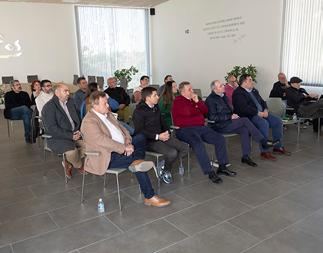


#reuse#savingourenviroment#sustainability#letsturnthisaround #recycle#greenchoice#earthmatters
Since 2015 we are very proud to say that Metalrok Ltd has been providing Gibraltar with a Recycling Service at the premises delivered by the government of Gibraltar Ecopark which is a joint public and private partnership located at 8 Flint Road. There has been an increase in Recycling but even so our daily waste stream contains goods which are perfectly suited to be reused not been recycled ending up in the landfill polluting the environment.
Together we can turn this around by reusing, preventing pollution, reducing usage of raw materials, sustaining the environment for future generations thus preventing them from ending in landfill and sea.
There is a need for these items in places like Senegal in West Africa were there are areas of extreme Poverty. with your cooperation we would like to meet their necessities by helping to provide them with donated unwanted items like:
All Clothing, Furniture inc Mirrors, Linen, household items, toys, office equipment, medical equipment electro domestics, bicycles, scooters, books. Car seats, doors windows, sinks, Showers, toilets.
We are collecting items that are still good for purpose and in usable condition in a bid to give them a new lease of life. Kindly take note that we will not make ourselves responsible for the collection of broken down items. The circumstances these people unfortunately live in deserve a sense of dignity and pride. Please only get in touch for items that will enhance and enrich their livelihoods.
Drop of points are:
Nanot Ltd 27 New Harbours: Mon To Fri from 10am to 3pm.
Ecopark 8 Flint Road: every day from 8am to 8pm.
Collections Mon to Fri 5pm to 7pm pre booked only ( Sat only Prebooked) this may change depending on demand. Is limited to more than 5 bags or large items only please send pics post collection.
WATSAPP ONLY: No 00350 56003361


There Is No Planet B.
Mike Berners-Lee.
In ‘There Is No Planet B’, Mike Berners-Lee presents concise, well-researched and easyto-digest answers to a wide range of climate change and environmental questions such as How much energy do we use? Is local food best? How can we sort out urban transport?
Should I drive an electric car? Why might wealth distribution matter more than ever?
This entertaining guidebook covers topics ranging from climate to food, economics to ecology and energy to population, whilst also offering readers
practical advice on the actions they can take to make a difference.
This a must-read for anyone that wants to gain a basic understanding of how we got here, the root of many issues we are facing today, and what we as individuals can do to help.
No hay planeta B. Mike Berners-Lee.
En "No hay planeta B", Mike Berners-Lee presenta respuestas concisas, bien documentadas y fáciles de digerir a una amplia gama de preguntas sobre el cambio climático y el medio ambiente, como ¿Cuánta energía utilizamos? ¿Es mejor la comida local? ¿Cómo podemos solucionar el transporte urbano?
¿Debería conducir un coche eléctrico? ¿Por qué la distribución de la riqueza es más importante que nunca?
Esta entretenida guía abarca temas que van del clima a la alimentación, de la
economía a la ecología y de la energía a la población, al tiempo que ofrece a los lectores consejos prácticos sobre las acciones que pueden emprender para cambiar las cosas.
Se trata de una lectura obligada para cualquiera que desee adquirir una comprensión básica de cómo hemos llegado hasta aquí, la raíz de muchos de los problemas a los que nos enfrentamos hoy, y lo que nosotros, como individuos, podemos hacer para ayudar.

Other minds.
Peter Godfrey-Smith.
If you've ever wondered how nature became self-aware, there's no better book to find the answer. A philosopher of science and experienced diver, Gedfrey-Smith traces the extraordinary evolutionary journey of cephalopods, which
chose a totally different path than mammals to possess that strange and ambiguous thing we call mind. This publication is full of sea, of lucidity and of an immersion as strange as it is rapturous. With titles full of lyricism, such as "Malignity and cunning", "From white noise to consciousness" or "Creating colors", it is not surprising the words that Irene Wammer dedicated to it in The Seattle Times: "The subject is so amazing that it is not difficult to feel seduced, as it happened to the author himself when he extended a hand to an octopus and it approached him to return the touch, in a clear sign of interest". I have to admit that since I read this book I have never tasted roasted octopus or Galician octopus again.
Otras Mentes.
Peter Godfrey-Smith. Si alguna vez te has preguntado cómo la naturaleza se hizo consciente de si misma, no hay mejor libro para encontrar la respuesta. Filósofo de la ciencia y buceador experimentado, Gedfrey-Smith traza el extraordinario viaje evolutivo de
los cefalópodos, que optaron por un camino totalmente diferente que el de los mamíferos para poseer eso tan extraño y ambiguo al que llamamos mente. Esta publicación está llena de mar, de lucidez y de una inmersión tan extraña como arrebatadora. Con unos títulos cargados de lirismo, pongo como ejemplos «Malignidad y astucia», «Del ruido blanco a la consciencia» o «Creando colores», no es de extrañar las palabras que Irene Wammer le dedicó en el The Seatle Times: «El tema es tan asombroso que no es difícil sentirse seducido, como le pasó al propio autor cuando le extendió una mano a un pulpo y este se acercó para devolverle el toque, en clara señal de interés». Tengo que reconocer que desde que leí este libro no he vuelto a probar el pulpo asado o la gallega.
The mushroom at the end of the world. Anna Lowenhaupt Tsing.
In the northern hemisphere, the most valuable fungus in the world, the matsutake, grows in forests where human intervention is negatively felt. The

author tells us that beyond mycology, what this fungus poses is the following - and terrible - question: what beings manage to live in the ruins we have created?
The Guardian said this book is "A poetic and fertile exploration of the relationship between humans and the natural environment." But it is also a dark journey into the heart of capitalism: industrial forests, Chinese goat herders of the Yi ethnic group or Japanese gourmets. The author is a professor in the Department of Anthropology at the University of California, Santa Cruz, and in 1918 received the Huxley Memorial Medal. It is structured in four parts entitled: "What Remains?", "After Progress: The Accumulation of Rescue", "Disturbed Beginnings: The Unintentional Design" and "Half of Things". An authentic biopic of the so-called mushroom at the end of the world.
La seta del fin del mundo.
Anna Lowenhaupt Tsing.En el hemisferio norte crece en los bosques donde la intervención humana se hace notar negativamente, y allí vive el hongo más valioso del mundo, el matsutake. La autora nos dice que más allá de la micología, lo que este hongo nos plantea es la siguiente —y terrible— pregunta: ¿Qué seres se las arreglan para vivir en las ruinas que hemos creado?. The Guardian dijo que este libro es «Una exploración poética y fértil de la relación entre los seres humanos y el medio ambiente natural». Pero también es un oscuro viaje al corazón del capitalismo: los bosques industriales, los pastores de cabras chinos de la etnia yi o los gourmets japoneses. La autora es profesora en el Departamento de Antropología de la Universidad de California en Santa Cruz, y en 1918 recibió la Huxley Memorial Medal. Está estructurado en cuatro partes tituladas: «¿Qué queda?, «Después del progreso: la acumulación de rescate»,
«Inicios perturbados: el diseño involuntario» y «La mitad de las cosas». Un auténtico biopic de la denominada seta del fin del mundo.

Ice on fire.
Leila Conners.
Since Leonardo Dicaprio transcended the role of movie handsome, he has matured as one of the most active advocates in defense of nature, with a high political conscience, and since his foundation, he has promoted several events on global warming, the defense of biodiversity and support for renewable energy. This documentary, directed by Leila Conners, warns us of the great environmental problems the planet is going through, without hiding the possibility of a new extinction caused by the escape of methane gas from Antarctica,
but unlike other films, this one proposes some solutions to reverse the greenhouse effect, extracting and eliminating carbon dioxide.
Hielo en llamas.
Leila Conners.
Desde que Leonardo Dicaprio trascendió el rol de guapera cinematográfico ha madurado como uno de los defensores más activos en defensa de la naturaleza.Con una elevada carga de conciencia política, y desde su fundación, ha promovido diversos eventos sobre el calentamiento global, la defensa de la biodiversidad y el apoyo a las energías renovables. Este documental es la nueva entrega sobre la que se vuelca, dirigido por Leila Conners, nos previene de la gran problemática medioambiental por la que está pasando el planeta, sin ocultar la posibilidad de una nueva extinción provocada por el escape del gas metano de la Antártida.Pero a diferencia de otros films, en este se proponen algunas soluciones para revertir el efecto invernadero, extrayendo y eliminando el dióxido de carbono.

Chasing coral. Jeff Orlowski.
Chasing Coral follows a team of divers, photographers and scientists to capture our changing oceans and document the disappearance of the world's coral reefs and what it means for the future of our planet.
Coral reefs are vanishing at an unprecedented rate. But their existence, as well as the threats these beautiful and vital ecosystems are up against, are mostly ignored. The team travelled the world and battled the forces of nature to show us how warming sea temperatures are destroying reefs.
Using stunning visuals to heartbreaking effect, together with a wealth of information explaining why coral reefs are important and the impact their loss would have on us all, this eye-opening documentary will have you calling out for change.
En busca del coral. Jeff Orlowski.
Chasing Coral sigue a un equipo de buceadores, fotógrafos y científicos para captar nuestros océanos cambiantes y documentar la desaparición de los arrecifes de coral del mundo y lo que significa para el futuro de nuestro planeta.
Los arrecifes de coral están desapareciendo a un ritmo sin precedentes. Pero su existencia, así como las amenazas a las que se enfrentan estos bellos y vitales ecosistemas, se ignoran en su mayor parte. El equipo viajó por todo el mundo y luchó contra las fuerzas de la naturaleza para mostrarnos cómo el calentamiento de la temperatura del mar está destruyendo los arrecifes.
Utilizando imágenes impresionantes con un efecto desgarrador, junto con una gran cantidad de información que explica por qué son importantes los arrecifes de coral y el impacto que su pérdida tendría en todos nosotros, este documental revelador te hará clamar por el cambio.
CirculArt.
Ateneo de Malaga.
Until 24th February 2023
The Ateneo de Málaga is hosting the II National Plastic Arts Contest – CirculArt. This is the first time the contest is being held in Andalucia.
The winners will be announced on the 27th of January and the exhibition will run until the 24th of February 2023.
The CirculArt Competition is an initiative organised by the European Recycling Platform. Its objective is to promote sustainable development and a cir-
cular economy through art and culture and aims to “become a reference space to awaken, through the plastic arts, a transformative vision of society that promotes a change towards a circular economy”.
The exhibition is open until February 24, 2022, from Monday to Friday from 12:00 to 14:00 and from 17:30 to 21:00.
CirculArt.
Ateneo de Málaga. Hasta el 24 de febrero de 2023.
El Ateneo de Málaga acoge el II Certamen Nacional de Artes Plásticas - CirculArt. Es la primera vez que el certamen se celebra en Andalucía.

Los ganadores se darán a conocer el 27 de enero y la exposición estará abierta hasta el 24 de febrero de 2023.
El Concurso CirculArt es una iniciativa organizada por la Plataforma Europea de Reciclaje. Su objetivo es promover el desarrollo sostenible y la economía circular a través del arte y la cultura y pretende "convertirse en un espacio de referencia para despertar, a través de las artes plásticas, una visión transformadora de la sociedad que promueva un cambio hacia una economía circular".
La exposición estará abierta hasta el 24 de febrero de 2022, de lunes a viernes de 12:00 a 14:00 y de 17:30 a 21:00.
eMobility Expo & World Congress.
Valencia . 21st to 23rd March 2023.
The eMobility Expo & World Congress will bring together private and public organisations to exhibit and promote cutting-edge solutions to citizens, governments, small businesses and large international companies to help them


solve their eMobility needs.
The conference will promote eMobility practices and offer advice to public and private organisations to help implement eMobility solutions and business models through more than 300 industry leaders and experts holding talks and debates as well over 200 exhibits showcasing the latest innovations in green mobility.
Manufacturers, tech companies, operators, public administrations, start-ups and many more from all across Europe will come together to present new trends and innovations and to help companies and organisations develop smart and sustainable business models.
https://www.emobilityworldcongress.com
eMobility Expo & World Congress. Valencia. Del 21 al 23 de marzo de 2023.
La Exposición y Congreso Mundial de eMovilidad reunirá a organizaciones privadas y públicas para exponer y promover soluciones de vanguardia dirigidas a ciudadanos, gobiernos, pequeñas empresas y grandes compañías internacionales para ayudarles a resolver sus necesidades de eMovilidad.
La conferencia promoverá prácticas de eMovilidad y ofrecerá asesoramiento a organizaciones públicas y privadas para ayudarles a implantar soluciones y modelos de negocio de eMovilidad a través de más de 300 líderes y expertos del sector que


celebrarán charlas y debates, así como más de 200 exposiciones que mostrarán las últimas innovaciones en movilidad ecológica.
Fabricantes, empresas tecnológicas, operadores, administraciones públicas, start-ups y muchos más de toda Europa se reunirán para presentar nuevas tendencias e innovaciones y
ayudar a las empresas y organizaciones a desarrollar modelos de negocio inteligentes y sostenibles.
https://www.emobilityworldcongress.com
Smagua
26th International Water and Environment Exhibition.
March 7-9.
Zaragoza Trade Fair. This event, with
more than 45 years of experience, has become one of the most important shows in Europe. With more than 409 exhibitors from 27 countries gathered in an area of 16,500 square meters to discover the latest in equipment and technology applied to the water cycle. In addition, there will be technical conferences and numerous product
Smagua. 26 Salón Internacional del agua y del medio ambiente. 7-9 Marzo. Feria de Zaragoza. Este certamen con más de 45 años de experiencia, se ha convertido en uno de los salones más importantes de Europa.

launches, equipment and innovative solutions. The sectors present at Smagua are: Catchment, transport and storage; Water treatment and reuse; Instrumentation, analysis and automation; Engineering and service companies; Point of use; Irrigation; Technical press and sectorial associations; Other types of equipment..
Con más de 409 expositores de 27 países reunidos en una superficie de 16.500 metros cuadrados para descubrir lo último en equipamiento y tecnología aplicadas al ciclo del agua. Además se ofrecerán jornadas técnicas y numerosos lanzamientos de productos, equipos y soluciones innovadoras. Los sectores presentes en Smagua son: Captación, transporte y almacenamiento; Tratamientos y reutilización de aguas; Instrumentación, análisis y automatización; Ingenierías y empresas de servicio; Punto de uso; Riego; Prensa técnica y asociaciones sectoriales; Otros tipos de equipamiento.
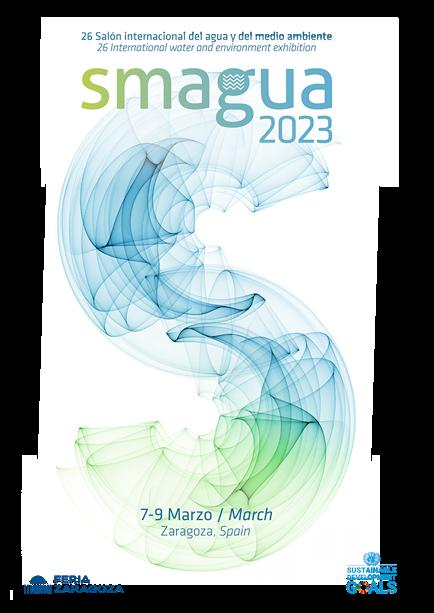


Europe's biodiversity continues to be shaped by human activity. Pressures to habitats and species remain high and more than 67 000 individual pressures have been reported at the EU level.
Resource: European Environment Agency.

¿Cuáles son las principales presiones sobre la naturaleza en Europa?
La biodiversidad europea sigue condicionada por la actividad humana. Las presiones sobre los habitats y las especies siguen siendo elevadas y se han notificado más de 67.000 presiones individuales a escala de la UE.
Con un 21%, la agricultura es la presión notificada con mayor frecuencia en relación con los hábitats y las especies. El abandono de los pastizales y la intensificación agrícola aprecian especialmente a las especies polinizadoras, las aves de los hábitats agrícolas y los habitats seminaturales.
Las especies exóticas invasoras, como el falso indigo. afectan especialmente a los ecosístenas dunares y los matorrales esclerófilos, así como a especies como las aves marinas reproductoras.
Las actividades forestales representan el 11% de todas las presiones y afectan especialmente a los habitats forestales y a las especies forestales.
La biodiversidad europea sigue condicionada por la actividad humana. Las presiones sobre los hábitats y las especies siguen siendo elevadas y se han notificado más de 67 000 presiones individuales a escala de la UE.
Fuente: Agencia Europea de Medio Ambiente.

El cambio climático se considera una amenaza creciente, especialmente debido a los cambios que están teniendo lugar en la temperatura, así como la disminución de las precipitaciones.
La urbanización y las actividades recreativas representan e 13% de todas las presiones notificadas, una cifra que alcanza el 48% en el caso de presiones marinas
La modificación de los regímenes hídricos, las alteraciones físicas de las masas de agua y la eliminación de sedimentos afectan principalmente a los hábitats y los peces de agua dulce
El 13% de todas las presiones para las aves proceden de la explotación de especies. Estas presiones están principalmente relacionadas con la caza y el exterminio ilegal de aves. En Europa, el cupo de caza anual asciende a, al menos, cincuenta y dos millones de aves.
Casi el 50% de todas las presiones relacionadas con la contaminación pueden atribuirse a la contaminación del aire, el agua y el suelo causada por la agricultura.

Interview with Prof Daniella Tilbury Commissioner for Sustainable Development and Future Generations
Colección de recursos sobre sostenibilidad
Entrevista con Daniella Tilbury Comisaria de Desarrollo Sostenible y Generaciones Futuras.
The Sustainability Resources Collection (SRC) housed at the John Mackintosh Library sounds like a great initiative to bring to life a world where sustainability is at its core. What was the thinking behind it?
The changes we are seeking in our community requires all of us to take responsibility for sustainability. However, acting for the benefit of the planet is not easy as the issues facing us are complex and requires us to rethink through how we need to respond. Many consult the internet which can be unreliable; others turn to experts, specialized consultants or experienced practitioners when making decisions but this advice is not always available or can be costly. To address this need, we are developing a Sustainability Resource Collection that seeks to inform and inspire action from those who are wrestling with questions of sustainability or what to make or lead changes for a better future.
How did the idea of an SRC come about and what age groups are you mainly focused on?
The collection also has resources for parents and educators who are wanting to develop awareness and engagement of children in environment
La Colección de Recursos para la Sostenibilidad (SRC, por sus siglas en inglés) de la Biblioteca John Mackintosh parece una gran iniciativa para dar vida a un mundo en el que la sostenibilidad está en el centro. ¿En qué se basa?
Los cambios que buscamos en nuestra comunidad exigen que todos nos responsabilicemos de la sostenibilidad. Sin embargo, actuar en beneficio del planeta no es fácil, ya que los problemas a los que nos enfrentamos son complejos y requieren que nos replanteemos cómo debemos responder. Muchos consultan Internet, que puede ser poco fiable; otros recurren a expertos, consultores especializados o profesionales experimentados a la hora de tomar decisiones, pero este asesoramiento no siempre está disponible o puede ser costoso. Para responder a esta necesidad, estamos desarrollando una Colección de Recursos sobre Sostenibilidad que pretende informar e inspirar la acción de quienes se enfrentan a cuestiones de sostenibilidad o qué hacer o liderar cambios para un futuro mejor.
¿Cómo surgió la idea de una CRS y a qué grupos de edad se dirige principalmente?
La colección también tiene recursos para padres



and development issues. Reading and activity books are included in the collection. Together with guidebooks on best to make a positive contribution to the environment and help bring sustainability alive in the curriculum and school grounds. These resources complement those colourful and highly rated teaching resources that were already donated to schools by the Guardian Angel Foundation between 2019-2021. In addition to resources for the young, the collection includes guides for teachers and teacher educators with several texts on educational theories and learning frameworks specifically developed for sustainability.
Increasingly, we find those in the private sector asking how they can take on the challenge of sustainability. I am often asked to help facilitate sustainability days, workshops or meetings or to recommend resources to support ‘in-house’ sustainability initiatives in the private, community and sports sectors. I am always happy to do these but recognise that those leading these initiatives need further support sometimes in form of resources or examples of best practice. The Sustainability Resource Collection (SRC) has materials for champions which can help them drive forward change plans for sustainability.
Another group that would benefit from these resources are NGOs or voluntary groups which undertake practical educational initiatives in relation to climate change, environment or biodiversity. The collection we are building can provide a backbone to this work advising on what educational activities have proven to be most effective and providing fresh suggestions on how to engage practically with sustainable living. The resources provide pointers on what works as well as to what to avoid so as to not create climate anxiety or frustration. These issues can be complex to address and require boundaries or frameworks to support good practice especially if you are working with young people.
Those who are wanting to deepen their knowledge and understanding in sustainability or who are considering building a specialism on sustainability will also benefit from these resources which include expert texts on carbon capture, water resources, biodiversity threats; climate change issues and food security amongst others. The collection will help
y educadores que deseen desarrollar la concienciación y el compromiso de los niños en cuestiones de medio ambiente y desarrollo. La colección incluye libros de lectura y de actividades. Junto con guías sobre la mejor manera de contribuir positivamente al medio ambiente y ayudar a dar vida a la sostenibilidad en el plan de estudios y en el recinto escolar. Estos recursos complementan los coloridos y muy valorados recursos didácticos que la Fundación Ángel de la Guarda ya donó a los centros escolares entre 2019 y 2021. Además de recursos para los jóvenes, la colección incluye guías para profesores y formadores de profesores con varios textos sobre teorías educativas y marcos de aprendizaje específicamente desarrollados para la sostenibilidad. Cada vez más, los miembros del sector privado se preguntan cómo pueden asumir el reto de la sostenibilidad. A menudo me piden que facilite jornadas, talleres o reuniones sobre sostenibilidad, o que recomiende recursos para apoyar iniciativas "internas" de sostenibilidad en los sectores privado, comunitario y deportivo. Siempre me complace hacerlo, pero reconozco que quienes dirigen estas iniciativas necesitan más apoyo, a veces en forma de recursos o ejemplos de buenas prácticas. La Colección de Recursos para la Sostenibilidad (SRC) dispone de materiales para campeones que pueden ayudarles a impulsar planes de cambio para la sostenibilidad.
Otro grupo que se beneficiaría de estos recursos son las ONG o los grupos de voluntarios que llevan a cabo iniciativas educativas prácticas en relación con el cambio climático, el medio ambiente o la biodiversidad. La colección que estamos creando puede constituir la columna vertebral de este trabajo, asesorando sobre las actividades educativas que han demostrado ser más eficaces y aportando nuevas sugerencias sobre cómo comprometerse de forma práctica con la vida sostenible. Los recursos proporcionan indicaciones sobre lo que funciona, así como sobre lo que hay que evitar para no crear ansiedad o frustración climáticas. Estas cuestiones pueden ser complejas de abordar y requieren límites o marcos que apoyen las buenas prácticas, especialmente si trabajas con jóvenes. Quienes deseen profundizar sus conocimientos y comprensión en materia de sostenibilidad o estén
those who are questioning how best to grapple with the complex issues.
How were the resources chosen?
The resource list was carefully put together by the Office of the Commissioner for Sustainable Development and Future Generations who have considered 100s of resources and reviews to identify those materials that most helpful and effective in promoting sustainability learning and engagement. Attention was paid to ensure that that texts, reading material and guidebooks come from different sources – some are internationally leading whilst others are more regional and relevant to the locality. It will take at least a year before the collection is complete as resources take time to arrive from overseas. These are catalogued as soon as they arrive.

Where can we find the Collection?
The Sustainability Resources Collection (SRC) was launched during Gibraltar Literature Week and is housed at the John Mackintosh Library. The resources are available in the reference section of the Library under a clearly labelled section ‘Sustainability Resource Collection’. The library provides photocopying services and the free use of computers with access to the internet. There is also a special section dedicated to children and toddlers furnished with bookcases designed for young children and colourful tables and chairs where additional sustainability resources purchased by the Library are available.
What if I cannot find the resources I need?
We would love to hear from you if there are specific resources you are looking for that are not yet in the collection. Please contact the Commissioner for Sustainable Development and Future Generations Daniella. tilbury@gibraltar.gov.gi with further particulars. These needs will inform future purchases and additions to the Sustainability Resources Collection.
pensando en crear una especialidad sobre sostenibilidad también se beneficiarán de estos recursos, que incluyen textos de expertos sobre la captura de carbono, los recursos hídricos, las amenazas a la biodiversidad, los problemas del cambio climático y la seguridad alimentaria, entre otros. La colección ayudará a quienes se preguntan cuál es la mejor manera de abordar estas complejas cuestiones.
¿Cómo se eligieron los recursos?
La lista de recursos ha sido cuidadosamente elaborada por la Oficina del Comisario de Desarrollo Sostenible y Generaciones Futuras, que ha tenido en cuenta cientos de recursos y reseñas para identificar los materiales más útiles y eficaces para promover el aprendizaje y el compromiso en materia de sostenibilidad. Se ha prestado atención a que los textos, el material de lectura y las guías procedan de distintas fuentes: algunos son líderes internacionales, mientras que otros son más regionales y relevantes para la localidad. La colección tardará al menos un año en estar completa, ya que los recursos tardan en llegar del extranjero. Se catalogan en cuanto llegan. ¿Dónde podemos encontrar la Colección?
La Colección de Recursos para la Sostenibilidad (SRC) se inauguró durante la Semana de la Literatura de Gibraltar y se encuentra en la Biblioteca John Mackintosh. Los recursos están disponibles en la sección de referencia de la biblioteca, en una sección claramente etiquetada como «Colección de Recursos para la Sostenibilidad». La biblioteca ofrece servicios de fotocopias y el uso gratuito de ordenadores con acceso a Internet. También hay una sección especial dedicada a los niños y a los más pequeños, amueblada con estanterías diseñadas para niños pequeños y mesas y sillas de colores, donde están disponibles recursos adicionales de sostenibilidad adquiridos por la biblioteca. ¿Qué ocurre si no encuentro los recursos que necesito?
Nos encantaría que nos dijeras si hay recursos concretos que buscas y que aún no están en la colección. Ponte en contacto con el Comisionado para el Desarrollo Sostenible y las Generaciones Futuras Daniella.tilbury@gibraltar.gov.gi con más detalles. Estas necesidades servirán de base para futuras compras y adiciones a la Colección de Recursos para la Sostenibilidad.
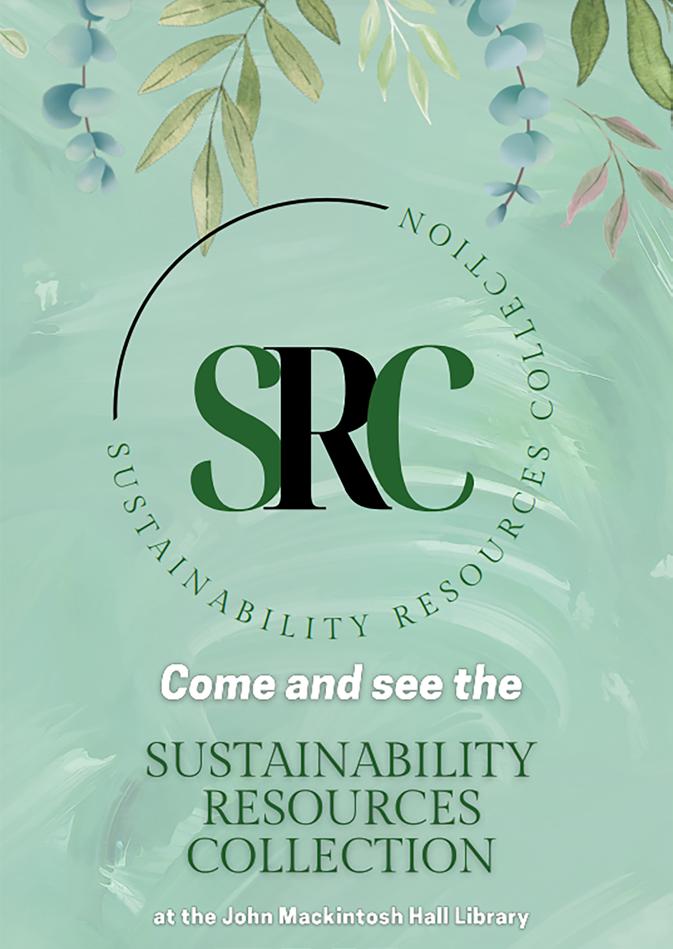
The Hydraloop is a greywater recycling unit. The unit collects greywater from showers, baths, washing machines, wash hand basins, even condensate from air conditioning units. It then cleans the water through a 6-stage patented process without filters or chemicals which can be reused for garden irrigation, flushing toilets, washing machines, and topping up swimming pools. The water can also be conveyed and stored into a storage tank for future use.
The Elderly Care Home is an 11 storey, facilitated living accommodation, fitted with over 180 bathrooms. The Hydraloop 12-unit cascade can collect over 6,000 litres a day and reuse the water for the laundry rooms. Any surplus water will be stored in an underground tank for future use such as cleaning terraces and irrigation.
The Malaga Project is a 5-bedroom, residential house consisting of 8 bathrooms. The Hydraloop is expected to collect up to 580 litres/day of greywater from all showers, baths and AC condensate pipes, of which approximately 500 litres/day will be reused for the washing machine, toilets and topping up the swimming pool. Surplus water will be stored in a tank to use for irrigating gardens.
Bishop Healy House is a 6-bedroom, residential house located in the South of Gibraltar, containing 8 bathrooms. 700 litres/day of greywater is estimated to be collected by the Hydraloop from all showers, baths and AC condensate pipes, of which approximately 600 litres/day will be reused for the washing machine and topping up the swimming pool. Surplus water will be stored in a tank to use for irrigating gardens.


¿Qué es el Hydraloop?
El Hydraloop es una unidad de reciclaje de aguas grises. Recoge las aguas grises de duchas, bañeras, lavadoras, lavabos e incluso el condensado de los aparatos de aire acondicionado. A continuación, limpia el agua mediante un proceso patentado de 6 etapas, sin filtros ni productos químicos, que puede reutilizarse para el riego de jardines, las cisternas de los inodoros, las lavadoras y el llenado de piscinas. El agua también puede transportarse y almacenarse en un depósito para su uso futuro.
Residencia de ancianos
La Residencia de Ancianos es un alojamiento de 11 plantas, con más de 180 cuartos de baño. La cascada Hydraloop de 12 unidades puede recoger más de 6.000 litros al día y reutilizar el agua para los lavaderos. El agua sobrante se almacenará en un depósito subterráneo para usos futuros, como la limpieza de terrazas y el riego.
Proyecto Málaga
El Proyecto Málaga es una casa residencial de 5 dormitorios y 8 cuartos de baño. Se espera que el Hydraloop recoja hasta 580 litros/día de aguas grises de todas las duchas, baños y tuberías de condensado de aire acondicionado, de los que aproximadamente 500 litros/día se reutilizarán para la lavadora, los aseos y el llenado de la piscina. El agua sobrante se almacenará en un depósito para regar los jardines.
Bishop Healy House
Bishop Healy House es una casa residencial de 6 dormitorios situada en el sur de Gibraltar, con 8 cuartos de baño. Se calcula que el Hydraloop recogerá 700 litros/día de aguas grises de todas las duchas, bañeras y tuberías de condensado de aire acondicionado, de los cuales unos 600 litros/día se reutilizarán para la lavadora y para llenar la piscina. El agua sobrante se almacenará en un depósito para regar los jardines.

El plan de sostenibilidad del sector turístico andaluz.
Juan José Amate Ruiz. Environmentalist and Sociologist . 2nd Vice President of COAMBA. Director of Sostenibilidad a Medida and Co-creator of TuDestino Sostenible.


COAMBA is not the author of the published articles, but acts as an intermediary between the author who writes the article and the magazine.
COAMBA no es el autor de los artículos publicados, si no que actúa de intermediario entre la persona colegiada que escribe el artículo y la revista
The World Travel & Tourism Council (WTTC) reported that through 2020, the global tourism industry had grown for eight years longer than the average yearly rate of the economy. At that time, the tourist industry accounted for one out of every five new jobs created in the previous five years and contributed close to 10% of the global GDP and total employment. It's significant to note that 80% of this spending was related to leisure and vacation travel, with 71% of it centered locally.
But the emergence of the COVID-19 pandemic and its impact in the form of travel restrictions and border closures, although it went much further, has possibly generated changes in the way we consume, move around and relate to each other that cannot yet be fully observed. In figures, tourism activity was one of the economic sectors that was most affected, halving its contribution to global GDP and, consequently, to employment and the economy of the main tourist countries and regions, where Spain and Andalusia have always played a very important role. This past year, 2022, has been the first in which the restrictions have been relaxed significantly and
Hasta el año 2020, de acuerdo a los datos que manejaba el World Travel & Tourism Council (WTTC), el sector turístico a nivel mundial venía encadenando ocho años de crecimiento por encima de la media anual de la economía. Por entonces, el sector turístico rozaba el 10% de aportación al PIB mundial y al total de los empleos, siendo además el responsable de uno de cada cinco empleos que se habían creado en los cinco años anteriores. Un aspecto importante es que el 71% de ese gasto se concentraba a nivel local y un 80% estaba asociado a turismo de ocio y vacaciones. Pero la aparición de la pandemia de COVID-19 y su impacto en forma de restricciones a los viajes y cierre de fronteras, aunque fue mucho mas allá, posiblemente ha generado cambios en nuestra forma de consumir, de desplazarnos y de relacionarnos que aún no pueden ser totalmente observados. En cifras, la actividad turística fue uno de los sectores económicos que se vio más afectado, reduciendo a la mitad su aportación al PIB mundial y, en consecuencia al empleo y la economía de los principales países y regiones turísticas, donde España y Andalucía siempre han tenido un papel muy relevante.
the recovery of mobility has been almost total. Something that has also influenced tourism activity, where this year comparisons have been made with pre-pandemic years to assess whether we are on the path to recovery and to answer the question: is there a rebound effect or are we really heading towards a scenario very different from the pre-pandemic one for the tourism sector?
In Spain, the data on the importance of the tourism sector are even more outstanding than worldwide. In 2021, already in full post-COVID-19 recovery, according to the INE tourism activity reached 97,126 million euros, 8.0% of GDP, which was 2.2 points more than in 2020. The characteristic branches of tourism generated 2.27 million jobs, 11.4% of total employment.
Going beyond these figures, until 2020 the tourism sector had a very relevant weight in the Spanish economy, much greater than other traditionally important sectors, such as the automotive industry, agriculture or even construction. And the prospects for growth in this decade were equally optimistic, a scenario that is no longer expected and that today presents many uncertainties.
The plans that will bring sustainability to the tourism sector
Economic recovery strategies at both the European and Spanish levels coincide in pointing to sustainability as one of the key axes. So much so that to speak of the European Commission's NextGeneration or the Spanish Government's Recovery, Transformation and Resilience Plans is to propose measures in the field of energy and ecological transition aimed at promoting the fight against climate change, circular economy models or the protection of biodiversity.
Therefore, the participation of the tourism sector in these recovery initiatives, or rather, almost, in the transformation of the economy, requires it to join in the initiatives to promote sustainability. Although tourism activity has never had a particularly important environmental regulation, it has not been alien to the adoption of commitments regarding the conservation of the environment and the efficient use of natural resources. For more than a decade, sustainability has been one of the main key trends in the
Este año 2022 que apenas hemos cerrado ha sido el primero en el que las restricciones se han relajado de manera importante y la recuperación de la movilidad ha sido casi total. Algo que también ha influido en la actividad turística, donde este año se han sucedido las comparaciones con los años pre-pandemia para valorar si se está en la senda de su recuperación y responder a una pregunta ¿hay efecto rebote o realmente vamos a un escenario muy diferente al de pre-pandemia para el sector turístico?
En España los datos de la importancia del sector turístico son aún más destacados que a nivel mundial. En 2021, ya en plena recuperación post COVID-19, según el INE la actividad turística alcanzó los 97.126 millones de euros, un 8,0% del PIB, lo que supuso 2,2 puntos más que en 2020. Las ramas características del turismo generaron 2,27 millones de puestos de trabajo, el 11,4% del empleo total.
Yendo más allá de estas cifras, hasta 2020 el sector turístico tenía un peso muy relevante en la economía española, bastante mayor que otros sectores tradicionalmente importantes, como la industria de la automoción, la agricultura o incluso la construcción. Y las perspectivas de crecimiento en está década eran igualmente optimistas, un escenario que ya no se espera y que a día de hoy presenta muchas incertidumbres.
Los planes que llevarán la sostenibilidad al sector turístico
Las estrategias de recuperación de la economía tanto a nivel europeo como español coinciden en señalar a la sostenibilidad como uno de los ejes clave. Tal es así que hablar de del NextGeneration de la Comisión Europea o de los Planes de Recuperación, Transformación y Resiliencia del Gobierno de España supone plantear medidas en materia de transición energética y ecológica orientadas a impulsar la lucha contra el cambio climático, modelos de economía circular o la protección de la biodiversidad.
Por tanto, la participación del sector turístico en estas iniciativas de recuperación, o casi mejor dicho, de transformación de la economía, pasa porque el mismo se sume a las iniciativas de impulso a la sostenibilidad. Si bien la actividad turística nunca ha tenido una regulación ambiental especialmente importante, no por ello ha sido ajeno a la adopción



tourism sector and it seems that in the coming years it is set to become even more important. And in view of the different plans that are being developed at all levels, it does not seem that this statement will be a toast to the sun.
On the one hand, the UN's 2030 Agenda for Sustainable Development, as an action plan for people, the planet and prosperity, which also intends to strengthen universal peace and access to justice, makes numerous appeals to the tourism sector for its involvement in achieving its 17 Sustainable Development Goals. In this sense, its role is key in some SDGs such as:
SDG 5. Gender Equality
SDG 8. Decent work and economic growth
SDG 9. Industry, innovation and infrastructure
SDG 11. Sustainable cities and communities
SDG 12. Responsible production and consumption
SDG 15. Conservation of terrestrial ecosystems.
SDG 16. Peace, justice and strong institutions.
Without undermining its role in the fight against climate change (SDG 13) or the conservation of marine habitats (SDG 14), among others.
Similarly, in the European Union, in addition to the aforementioned NextGeneration plan, there is the long-term EU budget through the European Union Strategic Framework 2021-2027 and, although to a lesser extent, the European Commission's European Green Pact, especially through measures to promote the blue economy due to the importance of tourism activity in the coastal areas of many European regions.
And in Spain, a good part of these initiatives is being articulated through Component 14 of the Recovery, Transformation and Resilience Plan, in the form of a Plan for the modernization and competitiveness of the tourism sector, in which, in addition to the Sustainable Tourism Strategy for Spain 2030, in recent months, funding is being provided for the preparation of Tourism Sustainability Plans in Destinations that will undoubtedly bring all these strategies closer to the local level in order to align them with existing tourism initiatives.
Finally, in Andalusia in 2021 the META Plan was approved, the name given to the General Plan for Sustainable Tourism in Andalusia 2027. In this plan
de compromisos en materia de conservación del entorno y el uso eficiente de los recursos naturales. Desde hace más de una década la sostenibilidad viene siendo una de las principales tendencias clave en el sector turístico y parece que en los próximos años está llamada a tener aún más protagonismo. Y a la vista de los diferentes planes que se están desarrollando a todos los niveles, no parece que esta afirmación vaya a ser un brindis al sol.
De un lado, la propia Agenda 2030 para el Desarrollo Sostenible de la ONU, como plan de acción a favor de las personas, el planeta y la prosperidad, que también tiene la intención de fortalecer la paz universal y el acceso a la justicia, realiza numerosas interpelaciones al sector turístico para su implicación en la consecución de sus 17 Objetivos de Desarrollo Sostenible. En ese sentido, es clave su papel en algunos ODS como:
ODS 5.Igualdad de Género
ODS 8.Trabajo decente y crecimiento económico ODS 9.Industria, innovación e infraestructura ODS 11. Ciudades y comunidades sostenibles ODS 12.Producción y consumo responsables ODS 15. Conservación de ecosistemas terrestres. ODS 16.Paz, justicia e instituciones sólidas.
Sin menoscabo de su papel en la lucha contra el cambio climático (ODS 13) o la conservación de los hábitats marinos (ODS 14), entre otros.
De la misma forma, en la Unión Europea al ya mencionado plan NextGeneration, se une el presupuesto de la UE a largo plazo a través del Marco Estratégico de la Unión Europea 2021-2027 y, aunque en menor medida, el Pacto Verde Europeo de la Comisión Europea, sobre todo a través de las medidas de impulso a la economía azul por la importancia de la actividad turística en las zona costeras de numerosas regiones europeas.
Y en España buena parte de estas iniciativas se está articulando a través del Componente 14 del Plan de Recuperación, Transformación y Resiliencia, en la forma de un Plan de modernización y competitividad del sector turístico, en que además de la Estrategia de Turismo Sostenible de España 2030, en los últimos meses, se está financiando la elaboración de Planes de Sostenibilidad Turística en DesSDGs linked to the Andalusian tourism sector. Source: Target 2027 Plan of the Regional Government of Andalusia.
ODS vinculados al sector turístico andaluz. Fuente: Plan Meta 2027 de la Junta de Andalucía.
there is again an allusion to Sustainability within its Vision and the Values that guide this plan, not in vain it is an approximation to the management that, from the Andalusian territory, has been done to incorporate a good part of the international plans and programs that have been generated in recent years.
What role will sustainability play in Andalusia's tourism model in the coming years?
One of the most useful resources of this plan is the strategic diagnosis it makes of the tourism sector in Andalusia and the role it gives to sustainability in it.
From the outset, one of the main problems detected is related to the management of sustainability, which according to this plan has consequences on the territory and generates territorial imbalances and is reflected in the poor development of environmental sustainability in tourist destinations in Andalusia.
This is why sustainability is pointed out as a weakness of the sector, pointing to the lack of awareness of the sector about the importance of sustainability. It is noteworthy that no aspect related to sustainability is included among the threats, such as external elements that could have an impact on the activity, such as new trends in tourism product consumption.
Nor does it do so among the strengths, a priori the sector itself does not identify the potential that Andalusia may already have in terms of commitments to sustainability adopted by the tourism activity.
But where sustainability is given special prominence is among the opportunities. Whether it is because of the greater global awareness of sustainability that the products and services offered by the tourism sector in Andalusia may be more attractive to the consumer than other destinations, or through the potential of the tourist exploitation of the Network of Protected Natural Spaces of Andalusia or the greater demand for emerging activities associated with ecotourism.
The challenges that this plan points out in terms of sustainability for the Andalusian tourism sector in that horizon 2027 are:
- Adequately contemplate sustainability (in all its aspects) in the business strategy and identify it as a factor of excellence of Andalusian destinations.
- Recognition of the post-COVID-19 recovery as
tino que sin duda van a acercar a nivel local todas estas estrategias para alinearlas con las iniciativas turísticas existentes.
Por último, en Andalucía en 2021 se aprobó el Plan META, nombre que se dió al Plan General de Turismo Sostenible de Andalucía 2027. En el mismo de nuevo se alude a la Sostenibilidad dentro de su Visión y los Valores que orientan dicho plan, no en vano el mismo es una aproximación a la gestión que, desde el territorio andaluz, se ha hacer para incorporar buena parte de los planes y programas internacionales que se han venido generando en los últimos años.
¿Qué papel va a tener la sostenibilidad en el modelo turístico de Andalucía de los próximos años?
Uno de los recursos más útiles de este plan es el diagnóstico estratégico que realiza del sector turístico en Andalucía y el papel que otorga a la sostenibilidad en el mismo.
De entrada, uno de los principales problemas detectados está relacionado con la gestión de la sostenibilidad, lo que según este plan tiene consecuencias sobre el territorio y genera desequilibrios territoriales y tiene su reflejo en el escaso desarrollo de la sostenibilidad ambiental en destinos turísticos de Andalucía.
Es por esto que la Sostenibilidad se apunta como una debilidad del sector, apuntando a la falta de concienciación del mismo sobre la importancia de la sostenibilidad. Llama la atención de que no se enmarca ningún aspecto relacionado con la sostenibilidad entre las amenazas, como elementos externos que pueden tener impacto en la actividad, como podrían ser nuevas tendencias de consumo de producto turístico.
Tampoco lo hace entre las fortalezas, a priori el propio sector no identifica el potencial que Andalucía ya puede tener en materia de compromisos con la sostenibilidad adoptados por la actividad turística. Pero donde sí que se da un especial protagonismo a la sostenibilidad es entre las oportunidades. Ya sea por esa mayor concienciación global en materia de sostenibilidad por la que los productos y servicios que ofrece el sector turístico en Andalucía puede resultar más atractivo para el consumidor que otros
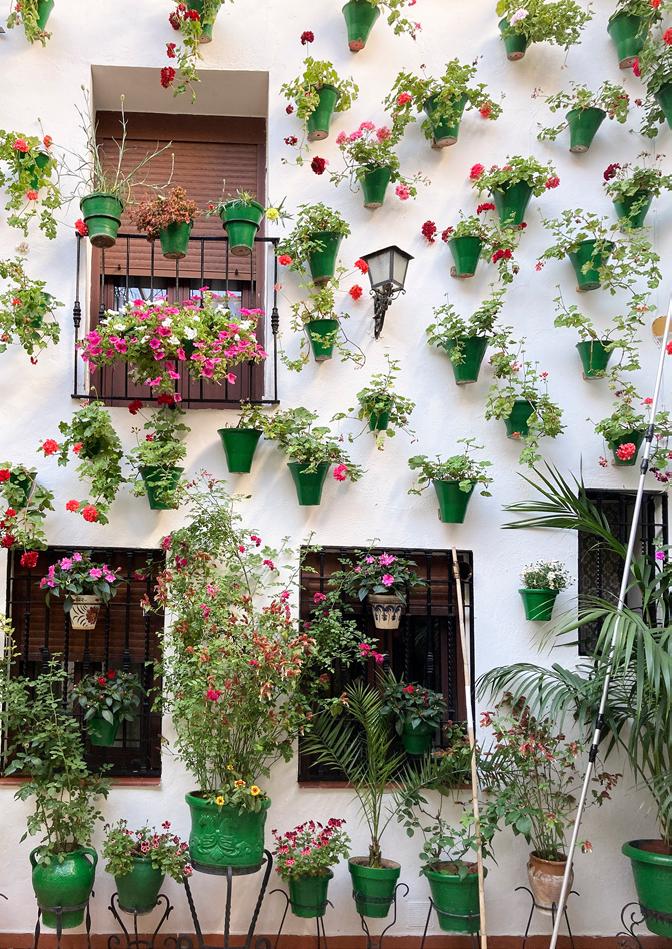

an opportunity to promote the change to a model of sustainable tourism and excellence.
- Raising awareness among the sector, tourists and citizens in general about the effects of climate change on the Andalusian territory and, consequently, on tourism resources.
- Promote commitments to sustainability through new management models and aligned with innovation, technology and tourism marketing.
The Andalusian tourism sector has before it the right scenario and a roadmap to ensure that sustainability is no longer an opportunity for the future but one of its hallmarks and, therefore, a global benchmark. And it already has numerous experiences and examples of how to advance in the incorporation of sustainability criteria in tourism.
The steps to take are not simple to implement, but many agents, like us environmentalists in the field of transformation towards sustainability, are also rowing in this direction. Our goal is to advance in a new model of tourism management whose fundamental pillars are environmental, economic, and social sustainability and that ensures a successful path for the Andalusian tourism sector. Let's complete it jointly.


destinos, como a través del potencial que supone el aprovechamiento turístico de la Red de Espacios Naturales Protegidos de Andalucía o la mayor demanda de actividades emergentes asociadas al ecoturismo. Los retos que este plan señala en materia de sostenibilidad para el sector turístico andaluza en ese horizonte 2027 son:
- Contemplar adecuadamente la sostenibilidad (en todas sus vertientes) en la estrategia empresarial e identificarla como factor de excelencia de los destinos andaluces.
- Reconocimiento de la recuperación post COVID-19 como una oportunidad para impulsar el cambio a un modelo de turismo sostenible y de excelencia.
- Sensibilizar al sector, al turista, y a la ciudadanía en general, sobre los efectos del cambio climático en el territorio andaluz, y en consecuencia sobre los recursos turísticos
- Impulsar los compromisos en materia de sostenibilidad de la mano de nuevos modelos de gestión y alineada con innovación y tecnología y marketing turístico
El sector turístico andaluz tiene ante sí el escenario propicio y una hoja de ruta para conseguir que la sostenibilidad deje de ser una oportunidad de futuro para ser una de sus señas de identidad y por tanto, ser referente a nivel mundial. Y ya cuenta con numerosas experiencias y ejemplos de cómo avanzar en la incorporación de criterios de sostenibilidad en la actividad turística.
Además, en pos del objetivo de avanzar en un nuevo modelo de gestión turística cuyos pilares fundamentales sean la sostenibilidad ambiental, económica y social y que asegure un recorrido de éxito para el sector turístico andaluz, los pasos a seguir no son fáciles de implementar, pero numerosos agentes, como somos los ambientólogos en el ámbito de la transformación hacia la sostenibilidad, también remamos en esta dirección. Hagámoslo juntos.
IF YOU WANT TO PUBLISH A BOOK, WE MAKE IT A PLEASANT EXPERIENCE
. GO THROUGH THESE PAGES AND YOU WILL SEE HOW

SI QUIERES EDITAR UN LIBRO, NOSOTROS LO CONVERTIMOS EN UNA EXPERIENCIA AGRADABLE. PASA ESTAS PÁGINAS Y LO COMPRENDERÁS

Analysis and design
Design of master grids for publications.Original layout and preparation for printing or electronic publication. Grammatical and spelling corrections. Adaptation of publications for digital media.
Design of books, collection lines, magazines, newspapers, catalogs, manuals, newsletters, business reports. Offset and digital printing. Short and large runs. Special binding and handling.
Consulting and Marketing
Writing and ghostwriting. Reading reports. Management of legal procedures: legal deposit, ISBN, search for infographics, illustrations or photographs. Typographic correction. Editorial coordination.
Editorial marketing and community management. Physical and virtual distribution (online). Promotional events for presentations and media.
Análisis y diseño
Diseño de retículas maestras para publicaciones. Maquetación y preparación de originales para la impresión o publicación electrónica. Correcciones gramaticales y ortotipográficas. Adaptación de publicaciones para soportes digitales.
Diseño de libros, líneas de colección, revistas, periódicos, catálogos, manuales, boletines, memorias empresariales. Impresión en offset y digital. Tiradas cortas y grandes. Encuadernación y manipulado especiales.
Asesoramiento y Marketing
Redacción y ghostwriting. Informes de lectura. Gestión de trámites legales: depósito legal, ISBN, búsqueda de infografías, ilustraciones o fotografías. Corrección tipográfica. Coordinación editorial.
Marketing editorial y community management. Distribución física y virtual (en línea). Eventos promocionales para presentaciones y medios de comunicación.

La experiencia italiana. Capítulo dos: Venecia
Texts and photographs: Anthony Pitaluga

Even though most 19th century travel writers and newspaper correspondents considered Verona —our previous destination— a second-rate city compared to the likes of Rome, Venice, or Milan, old Verona’s charm, and well-preserved historical assets, did not fail to impress us, well worth a visit. Venice, our next destination, is probably one of the reasons why Verona was considered second-rate. Shadowed, and always under Venetian influence, Verona has been eclipsed by the limitless lagoon city on the Adriatic Sea.
Venice is a picture that epitomises the power of human genius. It makes us admire how ingenuity and determination, have to a certain extent neutralised the natural forces, to produce a city built on a group of 118 small islands. A myriad of accounts about Venice have been written over the ages, the scope of the subject is vast and varied, but few, if any, have failed to admire its beauty.
Herr V Ludemann Von Witte, an18th century German visitor, describes how his senses were overwhelmed when he arrived in Venice for the first time
“…suddenly towers and more towers, domes and more domes, columns and more columns, and a forest of masts. Crowded palaces, the tower of San Marco, its golden dome, the splendour of Santa Maria della Salute and the Dogana. Finally, in all its breadth, the gigantic city. Our eyes are used to seeing ships in the sea, but not a city that floats, oscillating with its towers, churches, and palaces in the moving mirror of the waters. Only gods or giants could have conceived the idea of founding such a city on the treacherous waves of the sea”.
After a nice breakfast, we set off towards Venice from Verona, our previous destination. The E70 took us east, and on through the A57, that ended outside a huge parking complex on the city’s perimeter, a few kilometres from the centre. Parking in Venice is not straightforward. No vehicles are allowed in, and a prebooked, prepaid space in one of the city’s gigantic car parks located close to the city, is obligatory. The cost per day ranges from €15.00 to €20.00. Unfortunately, there are no free parking spaces in Venice. Having secured our car, we walked a short distance to Piazzale Roma vaporetto station. The Vapo-
Aunque la mayoría de los escritores de viajes y corresponsales de prensa del siglo XIX consideraban Verona —nuestro destino anterior— una ciudad de segunda categoría comparada con ciudades como Roma, Venecia o Milán, el encanto de la vieja Verona y sus bienes históricos bien conservados no dejaron de impresionarnos, por lo que merece la pena visitarla. Venecia, nuestro siguiente destino, es probablemente una de las razones por las que Verona se consideraba de segunda categoría. Sombreada y siempre bajo la influencia veneciana, Verona ha quedado eclipsada por la ilimitada ciudad lagunar del Adriático. Venecia es un cuadro que personifica el poder del genio humano. Nos hace admirar cómo el ingenio y la determinación han neutralizado hasta cierto punto las fuerzas naturales, para producir una ciudad construida sobre un grupo de 118 pequeñas islas. A lo largo de los tiempos se han escrito infinidad de relatos sobre Venecia, el alcance del tema es vasto y variado, pero pocos, o ninguno, han dejado de admirar su belleza. Herr V Ludemann Von Witte, un visitante alemán del siglo XVIII, describe cómo se sobrecogieron sus sentidos cuando llegó a Venecia por primera vez.
«…De repente, torres y más torres, cúpulas y más cúpulas, columnas y más columnas, y un bosque de mástiles. Palacios abarrotados, la torre de San Marcos, su cúpula dorada, el esplendor de Santa Maria della Salute y la Dogana. Finalmente, en toda su amplitud, la gigantesca ciudad. Nuestros ojos están acostumbrados a ver barcos en el mar, pero no una ciudad que flota, oscilando con sus torres, iglesias y palacios en el espejo móvil de las aguas. Sólo dioses o gigantes podrían haber concebido la idea de fundar una ciudad así sobre las traicioneras olas del mar».
Tras un buen desayuno, salimos hacia Venecia desde Verona, nuestro destino anterior. La E70 nos llevó hacia el este, y luego por la A57, que terminaba frente a un enorme complejo de aparcamientos en el perímetro de la ciudad, a pocos kilómetros del centro. Aparcar en Venecia no es sencillo. No se permite la entrada de vehículos, y es obligatorio reservar y pagar por adelantado una plaza en uno de los gigantescos aparcamientos de la ciudad, situados cerca de la ciudad. El coste por día oscila entre 15,00 y 20,00 euros. Por desgracia, no hay plazas de aparcamiento gratuitas en Venecia.
retto —referred to by Venetians as batèlo or vaporino—, Venice’s public waterbus service, translates as “the little steamer", referring to similarly purposed steam propelled vessels of an earlier era. The Vaporetto service is the responsibility of Azienda del Consorzio Trasporti Veneziano (ACTV), the Venetian public transport system.
We took a crowded vaporetto from Piazzale Roma station. The little steamer winded slowly, forging ahead through the congested waterways. The agglomeration of marine craft visible on the water, resembled a floating exhibition of the different types of vessels normally found in the lagoon city. These included an eclectic mix of water taxis, gondolas, sandolos (forerunner of the gondola), mototopo (diesel engine, typical Venetian transport vessel), barcheta a massoche (oversized gondola that can hold a maximum of 14 persons plus two Gondoliers), police/ambulance boats, rubbish disposal boats, cabin cruisers, fast launches, ferry boats, many other marine contraptions and of course more vaporettos. The bustle and chaotic commotion on the water is a sight to behold. From a distance, collisions appeared inevitable. In fact, these are very rare occurrences. It is quite surprising how this seemingly disorganized, topsy-turvy water traffic system operates. Ancient canal regulations and simple protocols of the sea, allow efficient water management, which in turn enables safe negotiation of the narrow, crowded, and winding Venetian waterways system.
Our vaporetto took us from Piazzale Roma, through part of the Grand Canal and its majestic palaces, to end up at the Rialto Bridge vaporetto water bus stop. The famous Rialto Bridge took three years to build, from 1588 to 1591. Rialto is forty-eight metres long and twenty-two metres wide, formed by a single marble arch, twenty-eight metres long and seven and a half metres tall. It is supported on 12,000 stilts. Conveniently for us, the Palace Bonvecchiati, our hotel for the next three nights, was only 300 metres away. Located just a stone’s throw from Saint Mark's Square, Hotel Palace Bonvecchiati, offers contemporary rooms with elegant furniture and very pleasing atmosphere. With a sense of great expectation, we moved in to a sophisticated, uniquely styled, double room with balcony, combining design, luxury, and charm. We had arrived in historic Venice; it was now time to explore.
Una vez asegurado nuestro coche, caminamos una corta distancia hasta la estación de vaporetto de Piazzale Roma. El Vaporetto —al que los venecianos se refieren como batèlo o vaporino—, el servicio público de autobús acuático de Venecia, se traduce como "el pequeño vapor", en referencia a las embarcaciones de propulsión a vapor de propósito similar de una época anterior. El servicio de Vaporetto es responsabilidad de la Azienda del Consorzio Trasporti Veneziano (ACTV), el sistema de transporte público veneciano. Cogimos un vaporetto abarrotado en la estación de Piazzale Roma. El pequeño vaporetto avanzaba lentamente por las congestionadas vías fluviales. La aglomeración de embarcaciones visibles en el agua parecía una exposición flotante de los distintos tipos de naves que suelen encontrarse en la ciudad lagunar. Entre ellas había una mezcla ecléctica de taxis acuáticos, góndolas, sandolos (precursores de la góndola), mototopo (embarcación de transporte típica veneciana con motor diésel), barcheta a massoche (góndola de gran tamaño con capacidad para un máximo de 14 personas más dos gondoleros), embarcaciones de la policía y las ambulancias, barcos de recogida de basuras, cruceros con camarote, lanchas rápidas, transbordadores, muchos otros artilugios marinos y, por supuesto, más vaporettos. El bullicio y la conmoción caótica en el agua son un espectáculo digno de contemplar. Desde la distancia, las colisiones parecen inevitables. De hecho, son muy poco frecuentes. Es bastante sorprendente cómo funciona este sistema de tráfico acuático aparentemente desorganizado y patas arriba. Las antiguas regulaciones de los canales y los sencillos protocolos del mar permiten una gestión eficaz del agua, que a su vez permite una negociación segura del estrecho, atestado y sinuoso sistema de vías navegables venecianas.
Nuestro vaporetto nos llevó desde Piazzale Roma, atravesando parte del Gran Canal y sus majestuosos palacios, para terminar en la parada del vaporetto del Puente de Rialto. El famoso Puente de Rialto tardó tres años en construirse, de 1588 a 1591. Rialto mide cuarenta y ocho metros de largo y veintidós de ancho, y está formado por un único arco de mármol de veintiocho metros de largo y siete y medio de alto. Se sustenta sobre 12.000 pilotes. Convenientemente para nosotros, el Palacio Bonvecchiati, nuestro hotel


Venice is difficult to describe but hard to confuse. Since antiquity it has developed according to a unique code written through the ages. Today, Venice can still be admired as it once was, full of splendour, made of gold and pietra d'Istria —Istrian stone: characteristic building stone in the architecture of Venice—. Beautifully preserved buildings, monuments and an impressive collection of canals that constitute the major water-traffic corridors unique to this city. The biggest and most important canal in Venice is the Grand Canal. Taking the Santa Lucia station's iron bridge, the Grand Canal winds to the northeast and east, forming the great inverse ‘S’ between the two large islands. Finally exiting at the San Marcos Canal. Beautifully preserved architecture adorns both sides of the Grand Canal. To the right San Simeon, the Municipal Museum and the Pesaro, Corner della Regina (where Catherine Cornaro Queen of Cyprus was born), and Camerlenghi, the Palace of the Treasures of the old Republic. On the left the churches called Gli Scalzi and Santa Marcuola, the Vendramin-Calergi palace, the Casa de Oro and the Fondaco dei Tedeschi, today the Post Office.
To gaze at a single glance all of Venice unique surroundings, we must ascend the bell tower of San Marco, an admirable work 335 feet high, built between 888 and 1148, and adorned with the beautiful loggietta of Sansovino. From this vantage point it is possible to appreciate Venice’s palaces and rodrigones (stick that is stuck in the ground to serve as a support point), its aquatic thoroughfares, its multiple tenements and residentials, its 154 canals, 136 islands, and 300 bridges, its lagoons fifteen nautical miles long and six wide, its lidos, its six ports, La Veste Malghera, the Canalazzo, that divides the city into two halves, its Rialto and the Guidecca, the superb Piazza San Marco, the distant islands, the urban masses, the sea, the smiling green of the mainland and the snow-capped peaks of the eternal Alps in the distance. A privileged panoramic view of the miracle of Venice in all its extravagant and dissonant peculiarity.
Piazza San Marco (Saint Mark’s Square) is unique. The ancient and powerful Venetian heart still pulsates in her. All city life flows to and from here.
Piazza San Marco has been the stage of Venice’s charged history, including party struggles, marketplace, promenade, meeting place, religious worship,
para las tres noches siguientes, estaba a sólo 300 metros. Situado a tiro de piedra de la Plaza de San Marcos, el Hotel Palace Bonvecchiati ofrece habitaciones contemporáneas con muebles elegantes y un ambiente muy agradable. Con gran expectación, nos instalamos en una sofisticada habitación doble con balcón, de estilo único, que combinaba diseño, lujo y encanto. Habíamos llegado a la Venecia histórica; ahora tocaba explorar.
Venecia es difícil de describir, pero difícil de confundir. Desde la antigüedad se ha desarrollado según un código único escrito a través de los tiempos. Hoy en día, Venecia aún puede admirarse como era antaño, llena de esplendor, hecha de oro y pietra d'Istria —piedra de Istria: piedra de construcción característica de la arquitectura de Venecia—. Edificios bellamente conservados, monumentos y una impresionante colección de canales que constituyen los principales corredores de tráfico acuático exclusivos de esta ciudad. El canal más grande e importante de Venecia es el Gran Canal. Tomando el puente de hierro de la estación de Santa Lucía, el Gran Canal serpentea hacia el noreste y el este, formando la gran «S» inversa entre las dos grandes islas. Finalmente se sale al Canal de San Marcos. Una arquitectura bellamente conservada adorna ambos lados del Gran Canal. A la derecha San Simeón, el Museo Municipal y el Pesaro, Corner della Regina (donde nació Catalina Cornaro, reina de Chipre), y Camerlenghi, el Palacio de los Tesoros de la antigua República. A la izquierda las iglesias llamadas Gli Scalzi y Santa Marcuola, el palacio Vendramin-Calergi, la Casa de Oro y el Fondaco dei Tedeschi, hoy Oficina de Correos.
Para contemplar de un solo vistazo todo el entorno único de Venecia, hay que subir al campanario de San Marcos, una admirable obra de 335 pies de altura, construida entre 888 y 1148, y adornada con la hermosa loggietta de Sansovino. Desde esta atalaya es posible apreciar los palacios y rodrigones (palo que se clava en el suelo para servir de punto de apoyo) de Venecia, sus vías acuáticas, sus múltiples tenencias y residencias, sus 154 canales, 136 islas y 300 puentes, sus lagunas de quince millas náuticas de largo y seis de ancho, sus lidos, sus seis puertos, La Veste Malghera, el Canalazzo, que divide la ciudad en dos mitades, su Rialto y la Guidecca, la soberbia Piazza


theatre, fatherland, and home of the Venetians. Resplendent in the variegated light of day, Piazza San Marco —680 feet long and 550 feet wide— transforms at night, beckoning adventures through the alluring lights of its classy establishments. Set in large marble slabs, the famous space invites us around under its vintage arcades, and into idiosyncratic little shops, and glittering musical cafes. The square resembles a gigantic popular pavilion where the history of a powerful state revives before our eyes. East meets West in Venice.
In the Basilica Cattedrale Patriarcale di San Marco (Cathedral of San Marco), the luxury of the Orient shines through Greek, Byzantine, and Neo-Italian art. The golden walls and vaults, supported by five hundred columns of the most expensive marble, alabaster, and lapis lazuli, (loot brought from the East), invite us in to wonder at the old history of the Venetians, which had the knowhow and desire to erect it. The singular exterior of this temple, begun in the year 967 CE, with its narrow entrances and high domes, its atriums with 11th century mosaics with gold backgrounds, and the doors of Hagia Sophia from Constantinople (Istanbul) attract us irresistibly. There are countless artistic treasures contained within this church. The Venetian trinity lives here in memory —Sansovino, Titian and Aretino.
One of the main landmarks of the city of Venice is the Palazzo Ducale, the Doge's Palace. Built in the Venetian Gothic style with influences from Byzantine and Islamic architecture, Palazzo Ducale was the residence of the Doge of Venice, supreme authority of the former Republic. Built in 1340, extended and modified in the centuries that followed. The Palace became a public institution in 1923 and is one of the numerous museums run by the Fondazione Musei Civici di Venezia.
There is a curious escape story relating to the Palazzo Ducale prison. The adventure of one, Giacomo Casanova, Italian adventurer, and author from the Republic of Venice. One of the greatest seducers in history. In 1755, at age 30, Casanova was arrested in Venice, for affront to religion and common decency. He was imprisoned in the ‘Leads’, name given to the Palace prison. So-called because it was located on top of the Doge’s Palace which was roofed in lead tiles. After months of confinement in a damp poorly lit prison cell, Casanova can’t take imprisonment any longer and decides to escape. Inventing a story
San Marco, las islas lejanas, las masas urbanas, el mar, el verde sonriente de tierra firme y las cumbres nevadas de los Alpes eternos en la lejanía. Una panorámica privilegiada del milagro de Venecia en toda su extravagante y disonante peculiaridad. La Piazza San Marco (Plaza de San Marcos) es única. En ella late aún el antiguo y poderoso corazón veneciano. Toda la vida de la ciudad fluye hacia y desde aquí. La Plaza de San Marcos ha sido el escenario de la cargada historia de Venecia: luchas partidistas, mercado, paseo, lugar de encuentro, culto religioso, teatro, patria y hogar de los venecianos. Resplandeciente a la abigarrada luz del día, la plaza de San Marcos —de 1.200 metros de largo y 1.500 de ancho— se transforma por la noche, invitando a la aventura a través de las seductoras luces de sus elegantes establecimientos. Con grandes losas de mármol, el célebre espacio nos invita a recorrerlo bajo sus arcadas de época, y a adentrarnos en idiosincrásicas tiendecitas y relucientes cafés musicales. La plaza se asemeja a un gigantesco pabellón popular donde la historia de un poderoso Estado revive ante nuestros ojos. Oriente se encuentra con Occidente en Venecia.
En la Basílica Cattedrale Patriarcale di San Marco (Catedral de San Marcos), el lujo de Oriente brilla a través del arte griego, bizantino y neoitaliano. Los muros y bóvedas dorados, sostenidos por quinientas columnas del más caro mármol, alabastro y lapislázuli, (botín traído de Oriente), nos invitan a entrar para maravillarnos de la antigua historia de los venecianos, que tuvieron la habilidad y el deseo de erigirla. El singular exterior de este templo, iniciado en el año 967 d.C., con sus estrechas entradas y altas cúpulas, sus atrios con mosaicos del siglo XI con fondos dorados, y las puertas de Santa Sofía de Constantinopla (Estambul) nos atraen irresistiblemente. Esta iglesia encierra innumerables tesoros artísticos. La trinidad veneciana vive aquí en el recuerdo: Sansovino, Tiziano y Aretino.
Uno de los principales monumentos de la ciudad de Venecia es el Palazzo Ducale, el Palacio Ducal. Construido en estilo gótico veneciano con influencias de la arquitectura bizantina e islámica, el Palacio Ducal era la residencia del Dux de Venecia, autoridad suprema de la antigua República. Construido en 1340, fue ampliado y modificado en los siglos si-

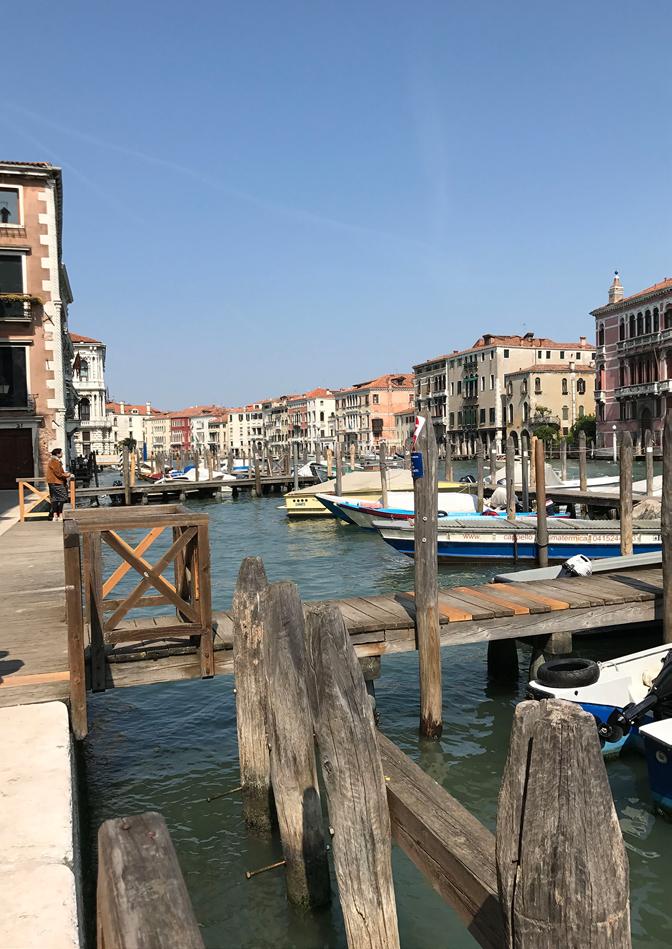
about an angel descending from heaven, Casanova, the son of actors, together with the angel, really a fellow prisoner accomplice, climbed out of a hole in the ceiling they had prepared earlier. They hacked their way to the leaden roof. How would they to get off the roof? They had also prepared dozens of feet of clothes which they attached with weaver’s knots for use as a rope. Precariously leaning over a sixty-foot drop, Casanova climbed through an open window and down a ladder into a large empty bedroom with an over-sized four poster bed. To the angel’s outrage, exhausted mentally and physically, Casanova fell asleep. Three hours later Casanova awoke, immediately he got up and dressed in new clothes, then casually he walked out of the Leads unhindered. Finally, he took a gondola out of the city, and in typical Casanova style, departed the Republic and into freedom as if nothing had ever happened. What a character!
About a minute walk from the Doge’s Palace, we get to Ponte dei sospiri, (Bridge of Sighs). The bridge, enclosed in white limestone, incorporates stone bar windows overlooking the Rio di Palazzo, and connects the Prigioni Nuove (New Prison) to the interrogation rooms situated in the Doge's Palace.
The view from the Bridge of Sighs was the last view of Venice that convicts saw before imprisonment. Translating from the original Italian vernacular, Lord Byron bequeathed the term Bridge of Sighs in the 19th century. The suggestion was that prisoners would sigh at their final view of beautiful Venice through the window of the bridge, before being taken down and into cells.
The highlight of our visit to Venice was a classical concert held at San Vidal Church. Founded in 1084 by the doge Vitale Falier, San Vidal is dedicated to his patron saint. The temple was reconstructed externally during the XII and XV centuries. Internally from the end of the XVII and beginning of the XVIII centuries. The new building is now characterised by a central nave and lateral alters. It is said that the famous Venetian musician Baldassare Galuppi (18 October 1706 – 3 January 1785) is buried here. However, there is no commemorative plaque.
San Vidal offered the perfect setting for the concert performed by the Interpreti Veneziani ensemble, a group of musicians renowned for their exuberance and all-Italian brio characterising their performanc-
guientes. El Palacio se convirtió en institución pública en 1923 y es uno de los numerosos museos gestionados por la Fondazione Musei Civici di Venezia. Existe una curiosa historia de evasión relacionada con la prisión del Palacio Ducal. La aventura de un tal Giacomo Casanova, aventurero y escritor italiano de la República de Venecia. Uno de los mayores seductores de la historia. En 1755, a la edad de 30 años, Casanova fue detenido en Venecia, por afrenta a la religión y a la decencia común. Fue encarcelado en los «Plomos», nombre dado a la prisión de Palacio. Se llamaba así porque estaba situada sobre el Palacio Ducal, cuyo tejado era de tejas de plomo. Tras meses de reclusión en una celda húmeda y mal iluminada, Casanova no puede soportar más el encarcelamiento y decide escapar. Inventando una historia sobre un ángel que desciende del cielo, Casanova, hijo de actores, junto con el ángel, en realidad un compañero de prisión cómplice, trepan por un agujero en el techo que habían preparado antes. Se abrieron paso a hachazos hasta el techo de plomo. ¿Cómo iban a salir del tejado? También habían preparado decenas de metros de ropa que ataron con nudos de tejedor para utilizarla como cuerda. Precariamente inclinado sobre un desnivel de sesenta pies, Casanova trepó por una ventana abierta y bajó por una escalera hasta un gran dormitorio vacío con una cama extragrande de cuatro postes. Ante la indignación del ángel, agotado mental y físicamente, Casanova se quedó dormido. Tres horas más tarde, Casanova se despertó, se levantó de inmediato y se vistió con ropa nueva; luego, despreocupadamente, salió de los Plomos sin impedimentos. Finalmente, tomó una góndola para salir de la ciudad y, con el típico estilo de Casanova, abandonó la República y se adentró en la libertad como si nunca hubiera pasado nada. ¡Qué personaje!
A un minuto a pie del Palacio Ducal, llegamos al Ponte dei sospiri, (Puente de los Suspiros). El puente, revestido de piedra caliza blanca, incorpora ventanas con barrotes de piedra que dan al Río di Palazzo, y conecta las Prigioni Nuove (Cárceles Nuevas) con las salas de interrogatorio situadas en el Palacio Ducal. La vista desde el Puente de los Suspiros era la última vista de Venecia que veían los convictos antes de su encarcelamiento. Traducido de la lengua vernácula original italiana, Lord Byron legó el término
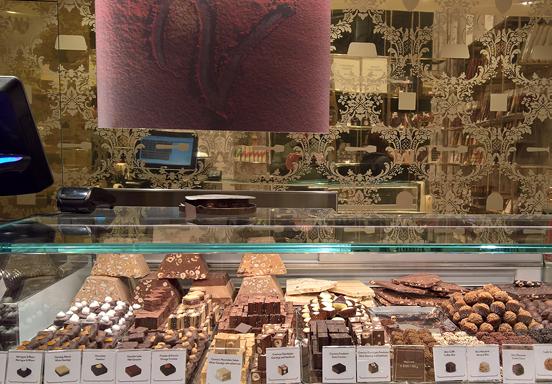
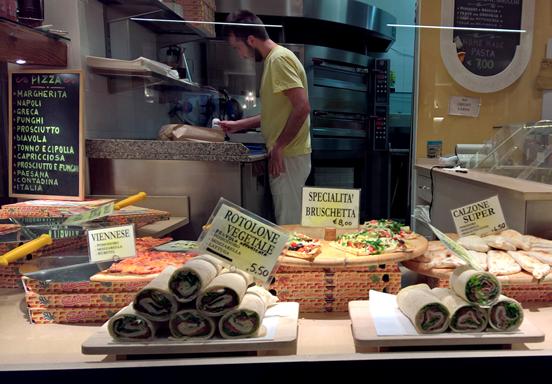
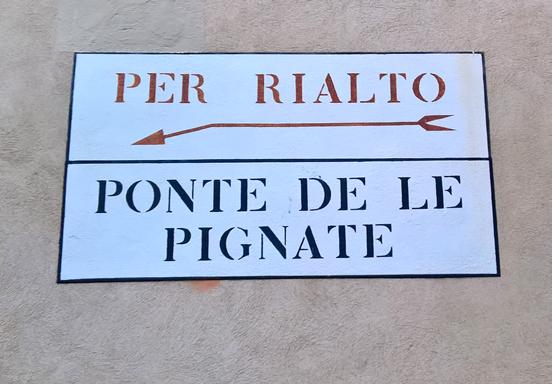
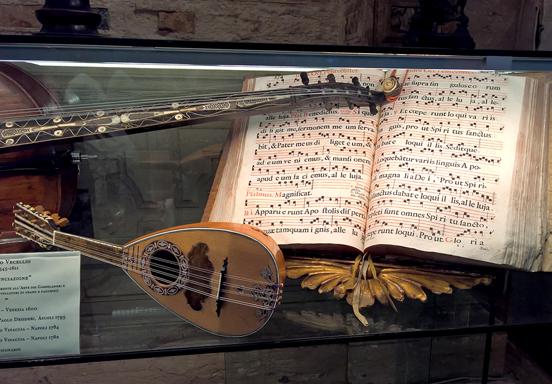
es. We were fortunate enough to be able to acquire good tickets to this fabulous meeting of music and the personified forces of art and architecture. We experienced moments of perfection born from the symbiosis of the artistic elements which appeared fashioned for each other.
The Interpreti Veneziani took to the temple’s central nave. Before beginning the evening’s session, the ensemble’s leader proclaimed:
“Whoever you are and wherever you come from, welcome to the city of harmony”.
The programme was dedicated to Antonio Vivaldi’s Le Quattro Stagioni (The Four Seasons) and excerpts of Cimento dell’Armonia e dell’Invenzione, and a single suite by Johan Sebastian Bach to end the evening. Born in Venice on the 4th of March 1678, Antonio Lucio Vivaldi, was an Italian composer, virtuoso violinist and impresario of Baroque music. His genius and influence were widespread across Europe during his lifetime. Bach, considered the father of Western classical music is just as big, some say even bigger than Vivaldi? A question of individual opinion I suppose. There is little consensus regarding the beauty of the arts in general. Taste is subjective.
The repertoire for the evening of music was the following:
Vivaldi – La Primavera (Spring.)
L’Estate (Summer).
L’Autunno (Autumn).
L’Inverno (Winter).
Bach - Suite No.1 for cello and strings.
The concert by Interpreti Veneziani was spectacular. The resonant acoustics of the old San Vidal church added to the dynamic vibrancy of the sound. The colourful tonalities of the instrumentation accommodated a profusion of notes; countless sharps, flats, naturals, and rests, bringing home the significant quality of the pieces and their famous composers. Music, art, and architecture came together, uniting to give us, the audience there present, a memorable experience.
The price of the performance ticket included an exhibition dedicated to the great tradition of Italian
Puente de los Suspiros en el siglo XIX. Se sugería que los presos suspirarían ante su última vista de la bella Venecia a través de la ventana del puente, antes de ser bajados y llevados a las celdas.
El punto culminante de nuestra visita a Venecia fue un concierto de música clásica celebrado en la iglesia de San Vidal. Fundada en 1084 por el dux Vitale Falier, San Vidal está dedicada a su santo patrón. El templo fue reconstruido exteriormente durante los siglos XII y XV. Internamente, desde finales del siglo XVII y principios del XVIII. El nuevo edificio se caracteriza ahora por una nave central y altares laterales. Se dice que el famoso músico veneciano Baldassare Galuppi (18 de octubre de 1706 - 3 de enero de 1785) está enterrado aquí. Sin embargo, no hay ninguna placa conmemorativa.
San Vidal ofreció el escenario perfecto para el concierto interpretado por el conjunto Interpreti Veneziani, un grupo de músicos famosos por la exuberancia y el brío totalmente italiano que caracterizan sus actuaciones. Tuvimos la suerte de poder adquirir buenas entradas para este fabuloso encuentro entre la música y las fuerzas personificadas del arte y la arquitectura. Vivimos momentos de perfección nacidos de la simbiosis de los elementos artísticos que parecían hechos el uno para el otro.
Los Interpreti Veneziani tomaron la nave central del templo. Antes de comenzar la sesión vespertina, el líder del conjunto proclamó:
«Seas quien seas y vengas de donde vengas, bienvenido a la ciudad de la armonía».
El programa estaba dedicado a Le Quattro Stagioni (Las Cuatro Estaciones) de Antonio Vivaldi y extractos de Cimento dell'Armonia e dell'Invenzione, y una única suite de Johan Sebastian Bach para terminar la velada. Nacido en Venecia el 4 de marzo de 1678, Antonio Lucio Vivaldi fue un compositor italiano, violinista virtuoso y empresario de la música barroca. Su genio e influencia se extendieron por toda Europa durante su vida. Bach, considerado el padre de la música clásica occidental, es igual de grande, ¿algunos dicen que incluso más que Vivaldi? Supongo que es una cuestión de opinión individual. Hay poco consenso sobre la belleza de las artes en general. El gusto es subjetivo.

violinmaking, featuring wonderful vintage pieces from the Versari collection. Twenty masterpieces of modern violinmaking, presented by Artemio Versari, one of the best known and most appreciated collectors of stringed instruments in the Italian and European musical worlds.
The musical extravaganza described above brought our stay in Venice to a close. The historic city of Venice, built up by sediments of the river Po, raised upon islands, surrounded by lagoons and canals, with no terrestrial motor transport, had lived up to the state of its established reputation. I am very glad that we decided to come to Venice. A return trip is more than likely.
Our next destination, 525 kilometres to the southwest of Venice was Rome, the eternal city.

El repertorio de la velada musical fue el siguiente:
Vivaldi: La Primavera (Primavera).
L’Estate (Verano).
L’Autunno (Otoño).
L’Inverno (Invierno).
Bach: Suite No.1 for cello and strings.
El concierto de Interpreti Veneziani fue espectacular. La resonante acústica de la antigua iglesia de San Vidal contribuyó a la vibración dinámica del sonido. Las coloridas tonalidades de la instrumentación dieron cabida a una profusión de notas; innumerables sostenidos, bemoles, naturales y silencios, que pusieron de manifiesto la significativa calidad de las piezas y de sus famosos compositores. La música, el arte y la arquitectura se unieron para ofrecernos a nosotros, el público allí presente, una experiencia memorable.
El precio de la entrada a la representación incluía una exposición dedicada a la gran tradición de la
fabricación italiana de violines, con maravillosas piezas antiguas de la colección Versari. Veinte obras maestras de la construcción moderna de violines, presentadas por Artemio Versari, uno de los coleccionistas de instrumentos de cuerda más conocidos y apreciados del mundo musical italiano y europeo.
La extravagancia musical descrita puso fin a nuestra estancia en Venecia. La histórica ciudad de Venecia, construida por los sedimentos del río Po, levantada sobre islas, rodeada de lagunas y canales, sin transporte terrestre a motor, había estado a la altura de su consolidada reputación. Me alegro mucho de que decidiéramos venir a Venecia. Es más que probable que volvamos.
Nuestro siguiente destino, a 525 kilómetros al suroeste de Venecia, era Roma, la ciudad eterna.









This Valentines Day say I love you to yourself with some sustainable selfcare. After some research, the Eco Passion team have discovered alternative options for your selfcare routine to suit your plastic-free lifestyle.
From bath bombs, to foot fizzes to skincare, we have a range of options which are good for your skin as well as the planet.
Our personal favourite is our skincare range from UpCircle where each product sources and rescues by-products from the food and drink industry. An example is their organic face serum with coffee oil to hydrate and brighten tired skin.



Este Día de San Valentín dedícate un «Me quiero» con un poco de autocuidado sostenible. El equipo de Eco Passion ha realizado una serie de investigaciones para descubrir las mejores opciones para tu cuidado personal sin plástico.
Desde bolas de baños o efervescencias para el cuidado de tus pies, hasta una escogida colección de productos para cuidar tu piel y la del planeta,
Nuestro favorito es la gama para el cuidado de la piel de UpCircle, donde cada artículo se obtiene de otros subproductos reutilizados de la industria de la alimentación y de las bebidas. Un ejemplo es un suero facial orgánico con aceite de café para hidratar e iluminar la piel cansada.




Manifestaciones de un organismo vivo en sus tres años de existencia
VOLUME 3 / VOLUMEN 3
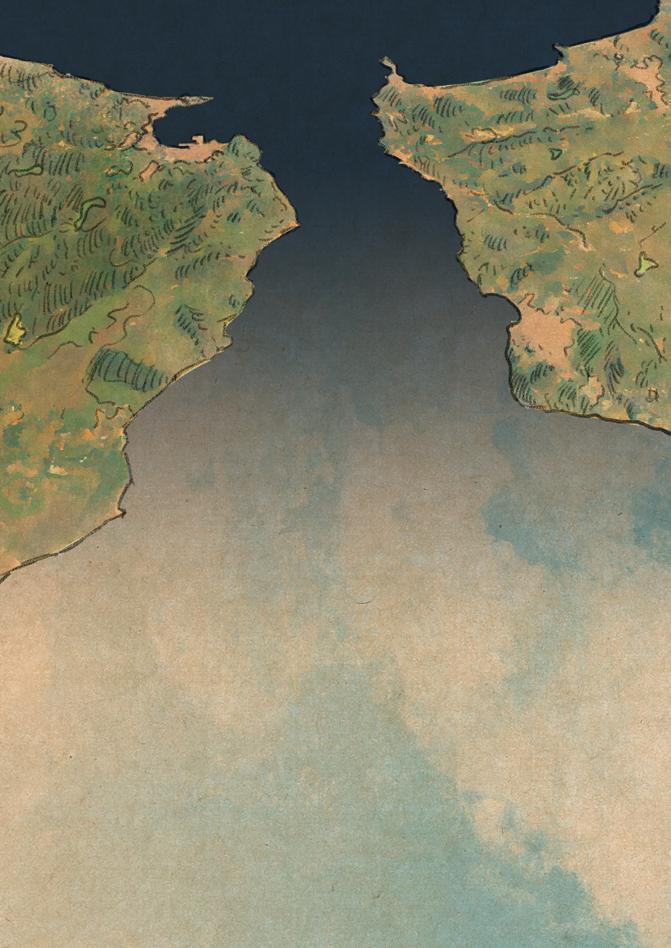
Juanlu González Article and images

It was already the middle of the 15th century in Al Andalus, when our protagonist was born for the first time in the lands of Granada, in the bosom of a noble family of military tradition. He was given the name of Abúl Hassan Áli Al-Mandari Al-Garnati at birth, although everyone called him Al Mandri. Of his childhood and youth, there is hardly any knowledge, except for some references written by his countryman and contemporary, Leon the African, whose incredible life we will have to give a good account someday from this public tribune.
As a trusted person of the Nasrid sultan Abu 'Abd Allah, known as Boabdil by the Christians, he became military chief of Granada, although he also held the position, like his grandfather and probably also like his father, of warden of the fortress of Píñar, a castle located about 30 kilometers north of Granada, which constituted the first line of defense of the palatial city, against the attack of the Christian invaders.
For many years, Sidi Mandri, who was already treated with honors of lordship, bravely resisted the onslaughts of the Castilian troops, achieving many and resounding feats on the battlefield. But our protagonist was tired. Tired of always fighting, without being able to enjoy times of peace. Tired of observing the enemy's beacons and their growing power in the Hoya de Guadix, from the fortified watchtowers of the Sierra de Harana. A crazy idea grew in his mind, while he was convinced that resistance was futile.
One fateful night in 1484, Al Mandri decided that this would be his last watch and that he would leave with his best and most faithful warriors for African lands. Fed up with the situation of the Nasrid kingdom and the palace intrigues, he decided to embark on a new life where he could be the master of his own destiny. At that time, Boabdil, his mother Aixa and his brother Yusuf, were in civil war against his father and uncle -the Zagal-. The total decomposition of the kingdom was a matter of time. Alliances with the Catholics against his relatives, permanent betrayals, pacts broken by everyone over and over again, vassalage to the Castilian kings... was something that Al Mandri could not bear any longer. He would never accept submission to the Christian kings and he knew all too well what they did with their pacts or with their word. So he left his beloved
Mediaba ya el siglo XV en Al Andalus, cuando nuestro protagonista vio la luz por primera vez en tierras de Granada, en el seno de una familia noble de tradición militar. Le fue dado al nacer el nombre de Abúl Hassan Áli Al-Mandari Al-Garnati, aunque todos lo llamaban Al Mandri. De su infancia y juventud, apenas se tiene conocimiento, salvo por algunas referencias escritas por su paisano y coetáneo, León el Africano, de cuya increíble vida deberemos dar buena cuenta algún día desde esta tribuna pública. Como persona de confianza del sultán nazarí Abu 'Abd Allah, conocido como Boabdil por los cristianos, llegó a ser jefe militar de Granada, aunque también ostentó el cargo, como su abuelo y probablemente también como su padre, de alcaide de la fortaleza de Píñar, un castillo situado a unos 30 kilómetros al norte de Granada, que constituía la primera línea de defensa de la ciudad palaciega, frente al ataque de los invasores cristianos.
Durante muchos años, Sidi Mandri, que ya era tratado con honores de señorío, resistió valientemente los embates de las tropas castellanas, logrando muchas y sonadas proezas en el campo de batalla. Pero nuestro protagonista estaba cansado. Cansado de andar siempre peleando, sin poder disfrutar de tiempos de paz. Cansado de observar las almenaras del enemigo y su creciente poderío en la Hoya de Guadix, desde las atalayas fortificadas de la sierra de Harana. Una loca idea crecía en su mente, mientras se convencía de que la resistencia era fútil.
Una aciaga noche de 1484, Al Mandri decidió que esa sería su última guardia y que partiría con sus mejores y más fieles guerreros a tierras africanas. Harto de la situación del reino nazarí y de las intrigas palaciegas, decidió emprender una nueva vida donde poder ser dueño de su propio destino. Por aquellas fechas, Boabdil, su madre Aixa y su hermano Yusuf, estaban en guerra civil contra su padre y su tío —el Zagal—. La descomposición total del reino era cuestión de tiempo. Alianzas con los católicos contra sus familiares, traiciones permanentes, pactos rotos por todos una y otra vez, vasallaje a los reyes castellanos… era algo que Al Mandri no puso soportar por más tiempo. Él jamás aceptaría la sumisión a los reyes cristianos y conocía de sobra lo que hacían con sus pactos o con la palabra dada. Así pues, dejó sus amadas tierras andaluzas y cruzó a la






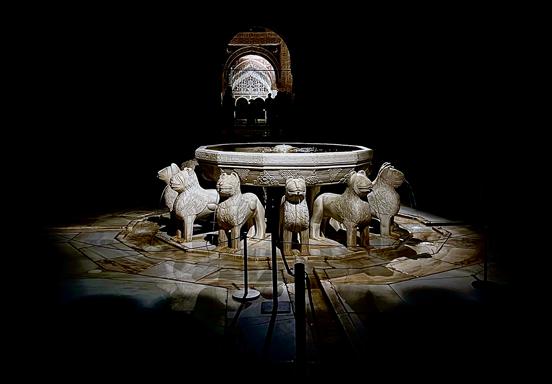
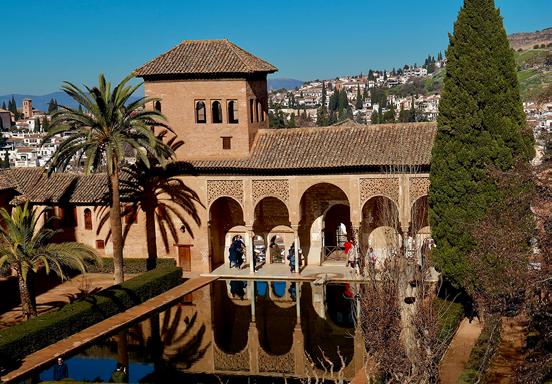
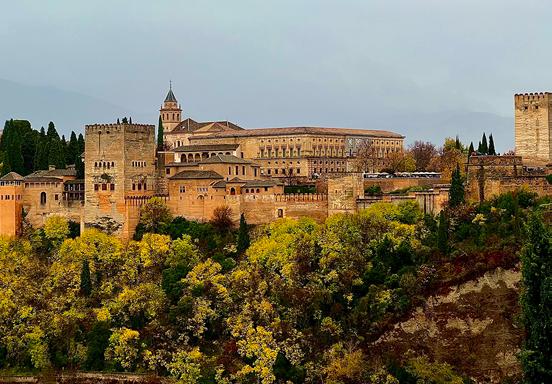

Andalusian lands and crossed to the other side of the Strait, then ruled by the Berber dynasty of the Wattasids.
As emir of some 350 aristocrats, warriors from Granada, together with their families and other Spanish-Muslim refugees, Leon the African tells us that Al Mandri crossed the Strait of Gibraltar to go to Tetouan, then belonging to the kingdom of Fez, immediately placing himself at the service of its sultan. There they were more than welcome. And not only because they were people who had emigrated along with their possessions and wealth, but also because their experience as warriors would come in handy in the struggles against the Portuguese, who dominated part of the Maghrebi coasts near the Strait.
At that time the city was practically uninhabited and completely ruined. Castilian troops of Henry III had ravaged it preventively in 1399 to protect their ships from the "pirates" who had taken refuge in it and, later, in 1437, the Portuguese armies finished razing it to the ground.
Thanks to the support of his friend Ali Ben Rachid, founder of Chaouen, who is believed to have directed the whole process of emigration and reception, it was possible to complete the rebuilding of part of the coastal city to accommodate the exiled population of Granada. For this reason, even today, Al Mandri is considered and venerated as the founder of Tetouan. Since then, his first name would add another nickname, becoming Abúl Hassan Áli Al-Mandari Al-Garnati Al-Titwaní. Al Mandri, that of Granada and that of Tetouan, the two towns that marked his life and in which he left his eternal mark.
The expert master builders from Granada quickly constructed houses in the Al Balad neighborhood, but their arrival did not please part of the Berber population of the Beni Hozmar tribe, who considered the Tetouan region as theirs. The king of Fez provided them with military reinforcements and money to buy the city, while the Chauni helped them with the outer protective wall, thanks to the experience accumulated in the complex defensive architecture of their own population, with a much more complex orography than that of Tetouan. Over time, the old medina improved, became safe and was able to accommodate many of Boabdil's courtiers and many more people from
otra orilla del Estrecho, gobernado entonces por la dinastía beréber de los wattasíes.
Como emir de unos 350 aristócratas, guerreros granadinos, junto con sus familias y otros refugiados hispano-musulmanes, León el Africano nos cuenta que Al Mandri atravesó el Estrecho de Gibraltar para encaminarse a Tetuán, perteneciente entonces al reino de Fez, poniéndose inmediatamente al servicio de su sultán. Allí fueron más que bienvenidos. Y no sólo porque era gente que había emigrado junto con sus posesiones y riquezas, sino porque su experiencia como guerreros les vendría muy bien en las luchas contra los portugueses, que dominaban parte de las costas magrebíes cercanas al Estrecho.
En esa época la ciudad estaba prácticamente deshabitada y completamente derruida. Tropas castellanas de Enrique III la habían asolado preventivamente en 1399 para proteger sus barcos de los «piratas» que se habían refugiado en ella y, posteriormente, en 1437, los ejércitos portugueses terminaron de arrasarla del todo.
Gracias al apoyo de su amigo Ali Ben Rachid, fundador de Chaouen, quien se cree que pudo dirigir todo el proceso de emigración y acogida, se pudo culminar la reedificación de parte de la ciudad costera para dar acomodo a la población granadina exiliada. Por ese motivo, aún hoy, a Al Mandri se le considera y venera como fundador de Tetuán. Desde entonces, su nombre de pila sumaría un sobrenombre más, pasando a ser Abúl Hassan Áli Al-Mandari Al-Garnati Al-Titwaní. Al Mandri, el de Granada y el de Tetuán, las dos poblaciones que marcaron su vida y en las que dejó su eterna huella.
Los expertos alarifes granadinos construyeron rápidamente viviendas en el barrio Al Balad, pero su llegada no gustó mucho a parte de la población beréber de la tribu Beni Hozmar, que consideraban suya a la región de Tetuán. El rey de Fez les proporcionó refuerzos militares y dinero para comprar la ciudad, mientras que los chauníes les ayudaron con la muralla de protección exterior, gracias a la experiencia acumulada en la compleja arquitectura defensiva de su propia población, con una orografía muchísimo más compleja que la de Tetuán. Con el tiempo, la antigua medina mejoró, se hizo segura y pudo acoger a buena parte cortesanos de Boabdil y a mucha más gente del reino nazarí que abandonó


the Nasrid kingdom who left the Peninsula. The founder of Chaouen also appealed to his former compatriots, offering them refuge in his fortified holy city, to which several thousand Muslims and Sephardic Jews flocked.
Al Mandri was the governor of the "White Dove" from 1485 until his death in 1540. There he built a society very similar to the one they had left behind; they achieved a peace and tranquility that those who preferred to stay in Andalusian lands would never enjoy. In homage to the influence that the people of Píñar had on the history of Tetuan, both towns were twinned in 1998, re-establishing an indissoluble link between both shores of those that shorten the Strait by many kilometers.
Around 1500, Al Mandri took as his wife the daughter of his friend and protector Ali Ben Rashid. He had married, in turn, before migrating to the southern shore, the vejeriega Catalina Fernandez, a local noblewoman converted to Islam, who became known as Lalla Zuhra. The daughter of both, Sayyida al-Hurra, much younger than Al Mandri, an exceptional woman in every way who was by no means only the wife of the governor, but the great "Free Lady" and the real governor of Tetouan between 1512 and 1542, since her husband was unable to exercise power after an illness caused by wounds suffered in battle. She is still venerated today by the women of northern Morocco, who go to bring flowers to her humble tomb in Chaouen. But that is another story to be told on a better occasion.
The close association of Al Mandri and Ali Ben Rashid, two true leaders of their people, two warriors at the head of Andalusian citizens who had fled from the Peninsula, succeeded in regaining control of the Rifian coasts for the Kingdom of Fez. From the port of Tetouan, at the mouth of the Martil River, the Andalusians harassed for years the coasts and the Christian ships that had invaded their ancestral lands. Something similar to the activity of the Moors expelled from Badajoz, who founded the "Republic of the Two Shores" in the 17th century to whip their invaders, with the sole intention of one day being allowed to return to the place where they were natives.
But the official history calls them pirates or corsairs.
la Península. El fundador de Chaouen también hizo un llamado a sus antiguos compatriotas, ofreciéndoles refugio en su ciudad santa fortificada, a la que acudieron varios miles de musulmanes y judíos sefardíes.
Al Mandri fue el gobernador de la «Paloma Blanca» desde 1485 hasta su muerte en 1540. Allí construyó un sociedad muy parecida a la que habían dejado atrás; lograron una paz y tranquilidad de la que jamás disfrutarían los que prefirieron quedarse en tierras andaluzas. En homenaje a la influencia que tuvieron las gentes de Píñar en la historia de Tetuán, ambas localidades se hermanaron en 1998, restableciendo un vínculo indisoluble entre ambas orillas de esos que acortan el Estrecho por muchos kilómetros. Alrededor del 1500, Al Mandri tomó por esposa a la hija de su amigo y protector Ali Ben Rashid. Este se había casado, a su vez, antes de emigrar a la orilla sur, con la vejeriega Catalina Fernández, una noble local convertida al Islam, que pasó a llamarse Lalla Zuhra. La hija de ambos, Sayyida al-Hurra, mucho más joven que Al Mandri, una mujer excepcional en todos los sentidos que no fue, ni mucho menos, solo la esposa del gobernador, sino la gran «Dama Libre» y la auténtica gobernadora de Tetuán entre 1512 y 1542, desde que su marido quedó imposibilitado para el ejercicio del poder tras una enfermedad provocada por las heridas sufridas en batalla. Todavía hoy es venerada por las mujeres del norte de Marruecos, que van a llevarle flores a su humilde tumba en Chaouen. Pero es otra historia que deberá ser contada en mejor ocasión.
La estrecha asociación de Al Mandri y Ali Ben Rashid, dos verdaderos líderes de sus pueblos, dos guerreros al frente de ciudadanos andalusíes huidos de la Península, logró retomar el control de las costas rifeñas para el Reino de Fez. Desde el puerto de Tetuán, en la desembocadura del río Martil, los andaluces acosaron durante años las costas y los barcos cristianos que habían invadido sus tierras ancestrales. Algo parecido a la actividad de los moriscos expulsados de Badajoz, que fundaron la «República de las Dos Orillas» en el siglo XVII para fustigar a sus invasores, con la única intención de que se les permitiese algún día volver al lugar de donde eran naturales.
Pero la historia oficial, los llama piratas o corsarios.



Last month, we introduced the tale of Nigerien farmer Tony Rinaudo who started a movement known as farmer-managed natural regeneration (FMNR). Without planting a single tree, his efforts lead to the reforestation of over five million hectares. That is an area approximately half the size of Iceland!
Such a significant transformation was worthy of study and led to multiple publications as researchers far and wide sought to study his methods, and their outcomes.
Areas that implemented FMNR:
- Produced 500,000 more tonnes of food annually than non-FMNR equivalent regions.
-Time spent by locals gathering firewood dropped from an average of three hours to 30 minutes.
- District incomes from maize, honey, and milk sales improved by 170% to 900%.
Despite this incredible data, money still pours into tree-planting initiatives in regions where it doesn’t make sense. Critics cite that money lost to unsuccessful tree-planting initiatives is in the billions of dollars. If there were any other programs with such a poor return on investment, the initiative would have been shelved long ago.
Are there certain countries where natural regeneration makes the most sense?
Join us next month to answer this in part three of our tree planting series. In the meantime, follow Science & Nature for weekly research bites and to connect with our author.
Carey, John. "The best strategy for using trees to improve climate and ecosystems? Go natural." Proceedings of the National Academy of Sciences 117.9 (2020): 4434-4438.

El mes pasado, presentamos la historia del agricultor nigeriano Tony Rinaudo, que inició un movimiento conocido como regeneración natural gestionada por el agricultor (RNGF). Sin plantar un solo árbol, sus esfuerzos condujeron a la reforestación de más de cinco millones de hectáreas. Es decir, ¡un área de aproximadamente la mitad del tamaño de Islandia!
Una transformación tan significativa era digna de estudio y dio lugar a múltiples publicaciones, ya que investigadores de todo el mundo trataron de estudiar sus métodos y sus resultados.
Las zonas que aplicaron la FMNR:
• Produjeron 500.000 toneladas más de alimentos al año que las regiones equivalentes no FMNR.
• El tiempo que pasaban los lugareños recogiendo leña se redujo de una media de tres horas a 30 minutos.
• Los ingresos de los distritos por la venta de maíz, miel y leche mejoraron entre un 170% y un 900.
A pesar de estos increíbles datos, se sigue invirtiendo dinero en iniciativas de plantación de árboles en regiones donde no tiene sentido. Los críticos citan que el dinero perdido por iniciativas de plantación de árboles sin éxito asciende a miles de millones de dólares. Si hubiera otros programas con un rendimiento de la inversión tan escaso, la iniciativa se habría archivado hace tiempo.
¿Hay determinados países en los que la regeneración natural tiene más sentido? Acompáñanos el mes que viene para responder a esta pregunta en la tercera parte de nuestra serie sobre plantación de árboles. Mientras tanto, sigue a Ciencia y Naturaleza para leer artículos de investigación semanales y para ponerte en contacto con nuestro autor.
Carey, John. "¿La mejor estrategia para utilizar los árboles para mejorar el clima y los ecosistemas? Opta por lo natural". Actas de la Academia Nacional de Ciencias 117.9 (2020): 4434-4438.
The Mediterranean is a global biodiversity hotspot and many plants from the region are used in horticulture. The use of plants that are adapted to local conditions is important for the sustainability of our gardens but furthermore, many Mediterranean plants are beautiful and make excellent garden plants. Rockroses are among the most typical and recognisable flowering plants of the Mediterranean. Their beautiful, paper-like flowers of white or pink are abundant on sunny spring days. Most species of Cistus prefer acid soils, so although Gibraltar's vegetation is well-developed and diverse, Cistus are not a predominant feature of our flora. However, Cistus albidus is more tolerant of basic soils and can be common in limestone areas, including some of the mountains north of the Rock. It is therefore a suitable rockrose to use in landscaping in Gibraltar. The species is found throughout the Mediterranean and is native to Gibraltar as well, but it is very rare on the Upper Rock. Its pink flowers and felty whitish-green foliage make it an extremely attractive garden plant. At the Gibraltar Botanic Gardens, the White-leaved Rockrose is best observed in the Mediterranean Rockery, alongside other flowers from Gibraltar and the wider region.
El Mediterráneo es un punto caliente de biodiversidad mundial y muchas plantas de la región se utilizan en horticultura. El uso de plantas adaptadas a las condiciones locales es importante para la sostenibilidad de nuestros jardines, pero además, muchas plantas mediterráneas son hermosas y constituyen excelentes plantas de jardín. Las jaras son unas de las plantas con flor más típicas y reconocibles del Mediterráneo. Sus hermosas flores blancas o rosas, parecidas al papel, abundan en los días soleados de primavera. La mayoría de las especies de Cistus prefieren los suelos ácidos, por lo que, aunque la vegetación de Gibraltar está bien desarrollada y es diversa, los Cistus no son una característica predominante de nuestra flora. Sin embargo, el Cistus albidus tolera mejor los suelos básicos y puede ser común en zonas calizas, incluidas algunas de las montañas al norte del Peñón. Por tanto, es una jara adecuada para su uso en jardinería en Gibraltar. La especie se encuentra en todo el Mediterráneo y también es nativa de Gibraltar, pero es muy rara en el Alto Peñón. Sus flores rosas y su follaje afelpado de color verde blanquecino la convierten en una planta de jardín muy atractiva. En el Jardín Botánico de Gibraltar, la jara de hoja blanca se observa mejor en la rocalla mediterránea, junto a otras flores de Gibraltar y de la región en general.

What does Valentine’s Day mean to Clubhouse members?
I’m a clubhouse member and my personal experience has been unique; I met my Valentine at one of the Clubhouse socials. I was so lucky I found my soul mate.
But Clubhouse is not a place only to meet soul mates, it is a place where we work together, gain confidence and help shy people like me to draw all my potential out. At Clubhouse, members can work together as a team making long term connections with each other. My relationship has strengthened thanks to the confidence I have gained by coming to the work ordered day and working closely together with my soulmate and coming to socials.
So, togetherness is the air we all breathe in Clubhouse which is the best magic and kind of love that you need for recovery. Taking care of each other is something we all need. Members and staff not only make us connect through work, also we learn how to control our emotions, to trust each other and feel like a warm family, working together which is the only real love we need.
In this special day, we give out Valentine cards to all the members, so they don’t feel lonely on this day, I think this gesture make us feel part of the Clubhouse family, together and no one is forgotten on this special day dedicated to love.
Valentine’s Day should be about connecting lost souls, family and friends together, not only for partners and gifts or chocolate and flowers to give away. It’s about bringing people together, while we get better mainly on these special days when everyone needs love and support. Open arms and hugs are given not only on Valentine’s Day, but also throughout the whole year. So, we wish a very special Valentine’s Day to everyone in Gibraltar and around the world.

Soy miembro del Clubhouse y mi experiencia personal ha sido única; conocí a mi Valentín en uno de los actos sociales del Clubhouse. Tuve mucha suerte de encontrar a mi alma gemela.
Pero Clubhouse no es un lugar sólo para conocer almas gemelas, es un lugar donde trabajamos juntos, ganamos confianza y ayudamos a las personas tímidas como yo a sacar todo mi potencial. En Clubhouse, los miembros pueden trabajar juntos como un equipo estableciendo conexiones duraderas entre ellos. Mi relación se ha fortalecido gracias a la confianza que he ganado viniendo al trabajo ordenado diario y colaborando estrechamente con mi alma gemela y viniendo a los actos sociales.
Así pues, la unión es el aire que todos respiramos en Clubhouse, que es la mejor magia y el tipo de amor que necesitas para recuperarte. Cuidarnos los unos a los otros es algo que todos necesitamos. Los miembros y el personal no sólo nos hacen conectar a través del trabajo, también aprendemos a controlar nuestras emociones, a confiar los unos en los otros y a sentirnos como una cálida familia, trabajando juntos, que es el único amor real que necesitamos. En este día tan especial, repartimos tarjetas de San Valentín a todos los socios, para que no se sientan solos en este día, creo que este gesto nos hace sentir parte de la familia Clubhouse, juntos y nadie es olvidado en este día especial dedicado al amor. El Día de San Valentín debería servir para unir a las almas perdidas, a la familia y a los amigos, no sólo para tener pareja y hacer regalos o regalar chocolate y flores. Se trata de unir a la gente, mientras mejoramos principalmente en estos días especiales en los que todo el mundo necesita amor y apoyo. Los brazos abiertos y los abrazos se dan no sólo en San Valentín, sino también durante todo el año. Así pues, deseamos un San Valentín muy especial a todos en Gibraltar y en todo el mundo.

Recyclable? No.
How long does it take to decompose: 500-800 years.
Alternatives:
Menstrual Cup. Period Underwear.
Menstrual Discs. Reusable, washable sanitary pads.
¿Reciclable? No.
¿Cuánto tiempo tardan en descomponerse? 500 -800 años.
Alternativas:
Copa menstrual. Ropa interior para ciclo menetrsal. Discos menstruales. Toallas sanitarias reutilizables y lavables.



Transport
Transporte disponible para grupos. Consultenos si estás interesado. OTWO es un mediador de estos paquetes. Todas las actividades se contratan directamente entre el operador y el cliente.
Precios válidos solo para el mes de febrero, consulte para otras fechas.
Our adventure SENDA BANDOLEROS is a mountain trek in stages that takes place INTEGRALLY in the Natural Park Sierra de Grazalema (Cádiz).
The Sierra de Grazalema was the first Biosphere Reserve declared in the Spanish territory in January 1977 and its Natural Park covers an area of over 50 thousand hectares, encompassing 14 villages and 2 provinces (Cadiz and Malaga).
A green lung with peaks covered by oaks, gall oaks, pinsapos and cork oaks that is a real natural museum full of legends, heritage and prehistoric remains.
The Path
"Senda Bandoleros Weekend" is a 2-stage hiking route that takes place in the Sierra de Grazalema Natural Park.
This modality is carried out in weekend (Saturday and Sunday) and presents a new route with the essence of the original crossing, in addition to new paths to discover, so it is attractive both for that person who does not have 4 days to make the original route, which is not yet prepared to face a route of 4 stages or even for those who have made the original route and would like to relive the experience again concentrated in 2 days.
The trip is done on an ALL INCLUSIVE basis in a small group of 14 participants.
We will cross the villages, castles and fortresses that formed the western border of the Nasrid kingdom, later reconquered for the Christians by D. Rodrigo Ponce de León, whom the Catholic Monarchs named Lord of the 7 Villas.
We will know the ancient rainwater storage systems, Los Aljibes de Ubrique, which served to conserve rainwater through simple hydraulic structures.
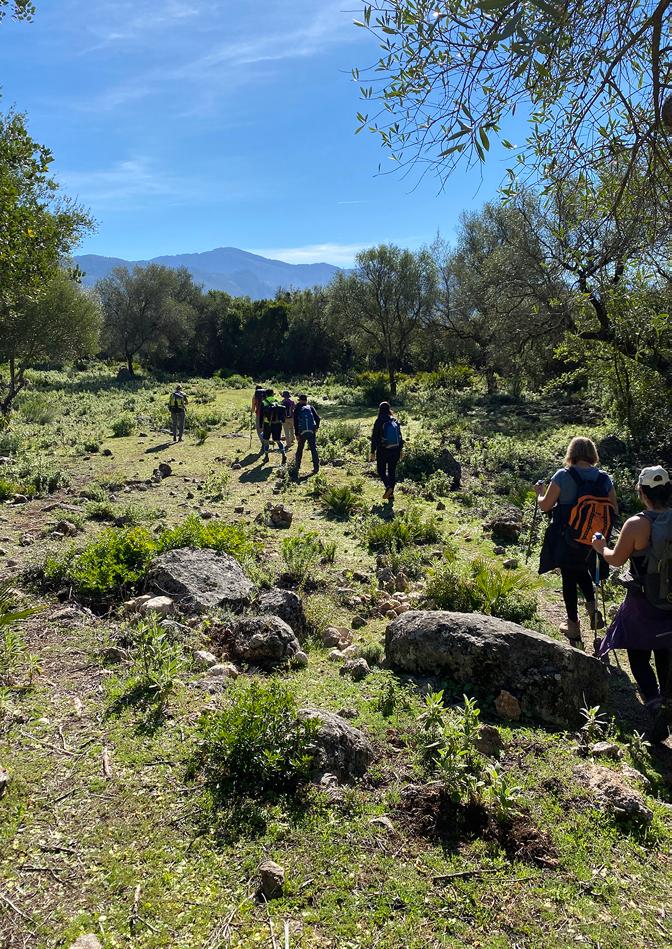
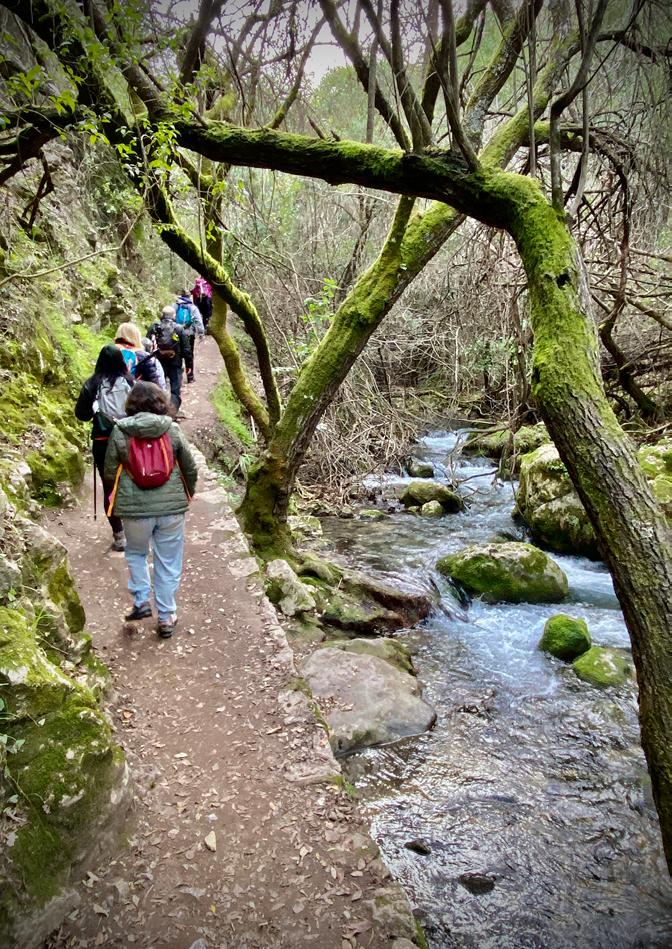
We will discover Los Navazos de Villaluenga, closed valleys or poljes, sometimes furrowed by small water courses which evacuate through sinkholes or chasms and which are encased between large karst walls.
We will dive into the history of the bandit Jose Maria Hinojosa "El Tempranillo" who lived in 1832 in Grazalema. His wedding, birth of his son and death of his wife are part of his legend as well as the place where he buried his wife's corpse which is still unknown.
All the necessary logistics will be available for the adventure, being carried out on an all-inclusive basis (activity, accommodation, meals, previous advice, etc).
Duration Canyoning: 2 Stages during 2 days.
Minimum/Maximum number of participants: 10/14 participants.
Recommended Dates:
From September to May.
Services:
Monitor guide and previous advice.
Lodging and meals.
First aid kit.
RC and Accident Insurance.
Photographic report with video summary.
Gifts (T-shirt) .
Pricing Complete adventure……….165 €
Nuestra aventura SENDA BANDOLEROS es una travesía de montaña por etapas que se desarrolla INTEGRAMENTE en el Parque Natural Sierra de Grazalema (Cádiz).
La Sierra de Grazalema fue la primera Reserva de la Biosfera declarada en el territorio español en Enero del 1977 y su Parque Natural ocupa una extensión de más de 50 mil hectáreas, englobando 14 pueblos y 2 provincias (Cádiz y Malaga). Un pulmón verde con cumbres arropadas por encinas, quejigos, pinsapos y alcornoques que constituye un verdadero museo natural repleto de leyendas, patrimonio y vestigios prehistóricos.
La Senda.
SENDA BANDOLEROS WEEKEND es una ruta de senderismo de 2 etapas que se desarrolla en el Parque Natural Sierra de Grazalema.
Esta modalidad se realiza en fin de semana (sabado y domingo) y presenta un nuevo recorrido con la esencia de la travesia original, además de nuevos caminos por descubrir, por lo que resulta atractivo tanto para aquella persona que no disponga de 4 días para realizar la ruta original, la que no se vea preparada aún para afrontar una ruta de 4 etapas o incluso para quien haya realizado la ruta original y le apetezca volver a revivir la experiencia concentrada en 2 días.
La travesía se realiza en régimen de TODO
INCLUIDO en grupo reducido de 14 participantes.
Surcaremos los pueblos, castillos y fortalezas que conformaron la frontera occidental del reino nazarí, posteriormente reconquistada para los cristianos por D. Rodrigo Ponce de León, al cual los Reyes Católicos nombraron señor de las 7 Villas.
Conoceremos los ancestrales sistemas de almacenamiento de agua de lluvia, Los Aljibes de Ubrique, que servían para conservar el agua de lluvia a través de estructuras hidráulicas simples.



Descubriremos Los Navazos de Villaluenga, valles cerrados o poljes surcadas, a veces, por pequeños cursos de agua los cuales evacuan a través de sumideros o simas y que se encuentran encajonados entre grandes paredes kársticas Nos sumergiremos en la historia del bandolero Jose María Hinojosa “El Tempranillo” que vivió en 1832 en Grazalema. Su boda, nacimiento de su hijo y muerte de su esposa forman parte de su leyenda así como el lugar donde enterró al cadáver de su esposa que sigue siendo desconocido.
Para la aventura se dispondrá de toda la logística necesaria, realizándose en régimen de todo incluido (actividad, alojamientos, comidas, asesoramiento previo, etc).
Duración:
2 Etapas durante 2 días.
Mínimo/Máximo de participantes: 10/14 participantes.
Fechas Recomendadas: De Septiembre a Mayo.
Servicios:
Monitor guía y asesoramiento previo. Alojamiento y Comidas.. Botiquín primeros auxilios.
Seguros RC y Accidentes.
Reportaje fotográfico con vídeo resumen. Regalos (Camiseta) .
Precios Aventura completa……….165 €

The Centennial Park, with an extension of 11 hectares has valuable elements of historical and cultural heritage of the city of Algeciras.
It is located within the boundaries of the "Intercontinental Biosphere Reserve of the Mediterranean Andalusia-Morocco" this reserve extends through some of the most emblematic territories of the provinces of Cadiz and Malaga in Spain and the provinces of Tangier, Tetuan, Larache and Chefchaouen in northern Morocco.
Of great importance, a part of the coastline is dominated by the flysch, a geological phenomenon created millions of years ago from the whims of an earth that decided to twist and play with the laws of physics in its own way, produced by the tectonic movements of the intercontinental plates.
A park where we can admire flora, wild olive, cork oak, Moorish gorse, jerguen, gall oak and its fauna, such as crustaceans Orchestia mediterranea and Tylos sardous, lizards, snake necklace, common bat, brown rat, sandpipers, terns and herons among others, as its location makes it an important place to observe the passage of migratory birds, as well as cetaceans, and a splendid view of the coast of the neighboring continent.
On the left side we are accompanied by the Chinarral which has fine sands and calm waters sheltered by a small inlet. The bottom of its waters is largely rocky highlighting several reefs a few meters
from the coast known as Las Hermanas, very dangerous for navigation, and to the right of the Getares inlet is the Getares beach whose sands, of fine thickness, come mainly from the contributions of the many seasonal streams that flow into the area and in particular the river Pícaro that formed in the past a marsh and a dune arrow.
For our route it is necessary to wear appropriate clothing for the terrain and the weather. We will start this trail by visiting the Interpretation Center of the Intercontinental Biosphere Reserve of the Mediterranean "Strait of Gibraltar" at the entrance of the park.
At the edge of the coast we will find four viewpoints where we will take some pictures of the spectacular views, a few meters away, in the rest area, we will observe the flysch and listen to the explanation of how they were formed.
If we are lucky we will be able to observe some dolphins dancing in the waters of the Bay of Algeciras and enjoy some of their jumps.
Moving forward, we will go back in time visiting historical sites of the park such as the 16th century watchtower, ruins of the fort of San Garcia, machine gun nests and bunker.
Before continuing we will climb the iron lookout tower from where we can have a 360º view of the city and its surroundings.
We will finish the trail at the entrance of the park, where we can enjoy a refreshment or coffee in its facilities.


El parque del Centenario, con una extensión de 11 hectáreas cuenta con valiosos elementos del patrimonio histórico y cultural de la ciudad de Algeciras. Se encuentra dentro de los límites de la «Reserva de la Biosfera Intercontinental del Mediterráneo Andalucía-Marruecos» esta reserva se extiende por algunos de los territorios más emblemáticos de las provincias de Cádiz y Málaga, en España y de las provincias de Tánger, Tetuán, Larache y Chefchaouen en el Norte de Marruecos. De gran importancia, una parte de la costa la protagonizan los flysch, un fenómeno geológico creado hace millones de años a partir de los caprichos de una tierra que decidió retorcerse y jugar con las leyes de la física a su manera, producida por los movimientos tectónicos de las placas intercontinentales.
Un parque en el que podremos admirar flora, acebuche, alcornoque, aulaga morisca, jerguen, quejigo y su fauna, como crustáceos Orchestia mediterránea y Tylos sardous, lagartijas, culebra de collar, murciélago común, rata parda, correlimos, charranes y garzas entre otras, ya que su situación hace que sea un lugar importante para la observación del paso de las aves migratorias, así como de los cetáceos, y una espléndida visión de la costa del continente vecino. Al lado izquierdo nos acompaña el Chinarral que posee arenas finas y aguas tranquilas al abrigo de una pequeña ensenada. El fondo de sus aguas es en gran parte rocoso destacando varios arrecifes a unos metros de la costa conocidos como Las Hermanas, muy peligrosos para la navegación, y a la derecha
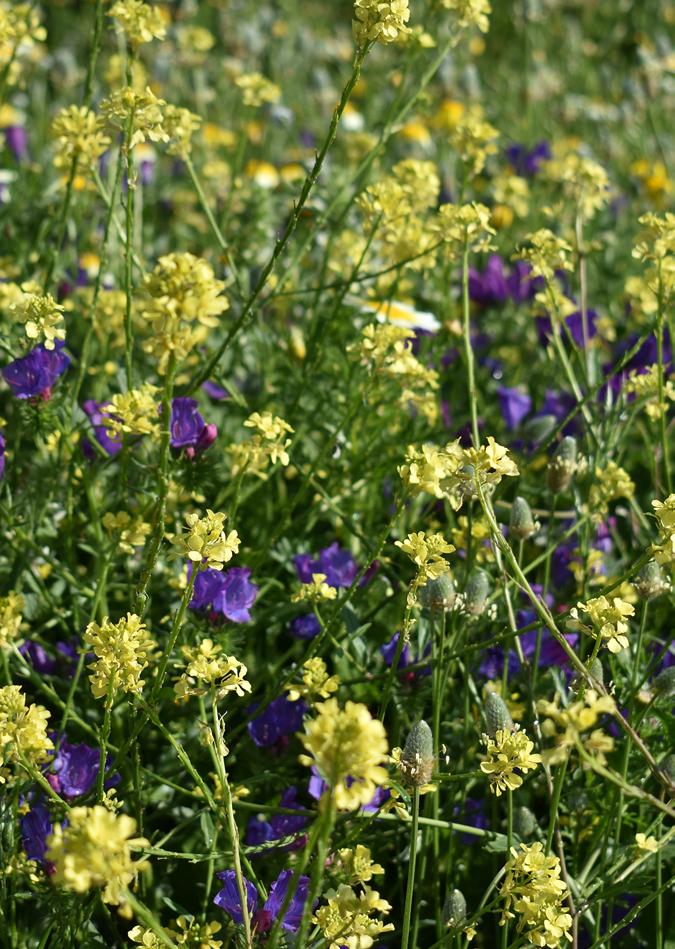
de la ensenada de Getares se encuentra la playa de Getares cuyas arenas, de fino grosor, proceden principalmente de las aportaciones de los numerosos arroyos estacionales que desembocan en la zona y en particular del río Pícaro que formó en el pasado una marisma y una flecha dunar.
Para nuestra ruta es necesario llevar ropa adecuada al terrero y a la climatología, iniciaremos este sendero visitando en la entrada del parque el Centro de Interpretación de la Reserva de la Biosfera Intercontinental del Mediterráneo «Estrecho de Gibraltar».
Al borde de la costa nos encontraremos con cuatros miradores donde tomaremos algunas fotos de las espectaculares vistas, a escasos metros, en el área de descanso, observaremos los flysch y escucharemos la explicación de cómo se formaron.
Con suerte podremos observar algún delfín danzando en las aguas de la Bahía de Algeciras y obsequiarnos con algunas de sus saltos.
Adelantando nuestros pasos, retrocederemos en el tiempo visitando lugares históricos del parque como son la torre almenara del siglo XVI, ruinas del fuerte de San García, nidos de ametralladores y bunker.
Antes de continuar subiremos a la Torre mirador de hierro desde donde podremos tener una visión de 360º de la ciudad y su entorno.
Finalizaremos el sendero en la entrada del parque, donde podremos disfrutar de un refresco o café en sus instalaciones.
Gibraltar

Gibraltar
Enjoy breath taking views across 3 countries and 2 continents, explore Gibraltar’s fascinating history and be introduced to our most famous inhabitants, the Barbary macaques – the only free roaming monkeys in Europe!
Price: £69 per person.
Highlights
Europa Point and Lighthouse. Upper Rock Nature Reserve.
Pillars of Hercules Monument.
Windsor Suspension Bridge. O’Hara’s Battery (top of Rock 424m). Skywalk.
Ape’s Den.
Great Siege Tunnels. Moorish Castle. …And many more.
What’s included?
Premium e-bike by Riese&Müller. Cycle helmet. Safety instructions.
Entrance fee into the Nature Reserve.
An official tour guide. Bottled water.
DURATION:
3 hours. Suitable for everyone over 155 cm, over 12 years old and capable of riding a bicycle.
Gibraltar
Disfrute de las impresionantes vistas de 3 países y 2 continentes, explore la fascinante historia de Gibraltar y conozca a nuestros habitantes más famosos, los macacos de Berbería, ¡los únicos monos que se desplazan libremente en Europa!
Precio: £69 por persona.
Puntos destacados
Punta de Europa y el Faro
Reserva Natural Upper Rock (Parte superior del peñon)
Monumento de las Columnas de Hércules
Puente colgante de Windsor
Bateria de O’Hara (parte superior del peñon - 424m). El Skywalk
Guarida de los monos
Gran túneles de asedio
Castillo Arabé. …y muchos más
¿Qué está incluido?
Alta calidad E-bike de Riese&Müller. Casco de bicicleta
Instrucciónes de seguridad
Entrada a la reserva natural Guía oficial Agua embotellada.
3 horas. Adecuadas para todos los que midan más de 155 cm, tengan más de 12 años de edad y puedan montar en bicicleta.
Organized by: OTWO Magazine
Tel. +00350 22500799
info@otwomag.com
Transport available for groups.Check with us for your requirements.
OTWO is a facilitator on these packages. All activities are contracted directly between the respective centre operator and the client.
Organized by: OTWO Magazine
Tel. +00350 22500799
info@otwomag.com
Transporte disponible para grupos.
Consultenos si estás interesado.
OTWO es un mediador de estos paquetes. Todas las actividades se contratan directamente entre el operador y el cliente.

The Hozgarganta River, one of the many charms of the town of Jimena de la Frontera, the Roman road, the viewpoint of the Asomadillas, the Royal Pump Factory ... these are places that will be present on this route, thus enjoying, in addition to the nature of a few moments of historical and cultural content.
We will be able to see a diversity of birds and highlight the presence of wild orchids on our way in addition to the rich diversity of flora in the area.
Location: Municipal district of Jimena de la Frontera.
Duration: 3 hours approximately.
Distance: 9 km approx.
Starting point: Parking lot of Los Alcornocales campsite.
Clothing and footwear: comfortable clothing and footwear.
Authorization: No.
Route: Circular.
Difficulty: Low (suitable for children from 6 years old)
Date: Spring, autumn and winter.
Price: 10£.
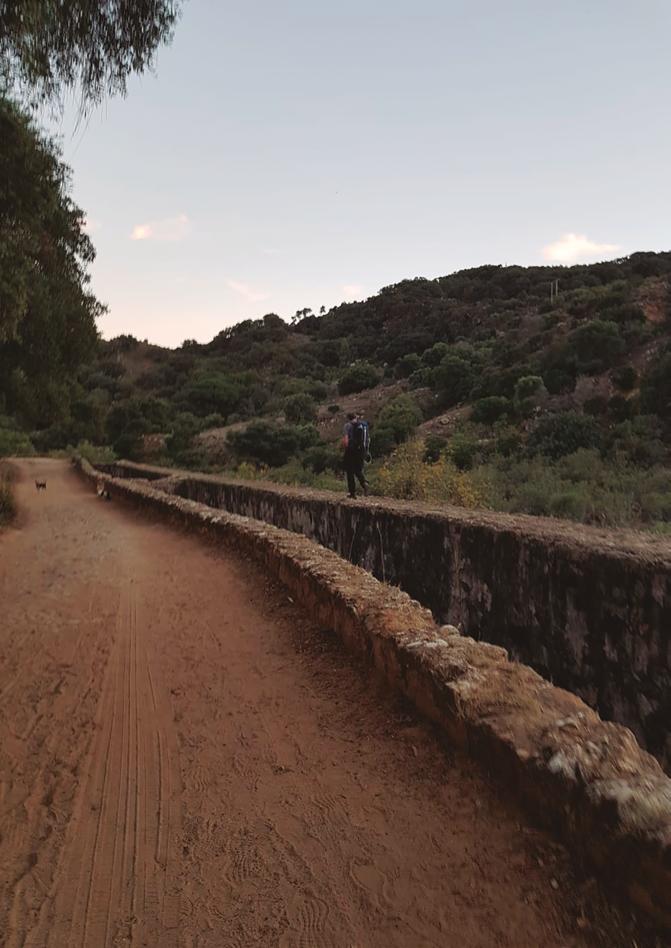
El Rio Hozgarganta, uno de los muchos encantos de la población de Jimena de la Frontera, la calzada romana, el mirador de las Asomadillas, la Real Fábrica de Bombas …son lugares que van a estar presentes en esta ruta, disfrutando así, además de la Naturaleza de unos momentos de contenido histórico y cultural.
Podremos avistar diversidad de aves y destacar la presencia de orquídeas silvestres en nuestro camino además de la rica diversidad de flora de la zona.
Localización: Término municipal de Jimena de la Frontera.
Duración: 3 horas aproximadas.
Distancia: 9 km aproximados.
Lugar de partida: Aparcamiento del camping Los Alcornocales.
Ropa y calzado: vestimenta y calzado de campo
Autorización: No.
Ruta: Circular.
Dificultad: Baja (apta para niños a partir de 6 años).
Fecha: primavera, otoño e invierno.
Precio: 10£.

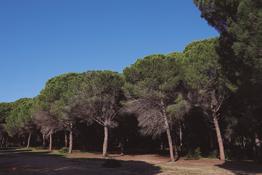

In the Natural Park Los Alcornocales, the Pinar del Rey is located between the municipalities of San Roque and Castellar de la Frontera, in Cadiz.
Its origin dates back to 1800, this place was chosen to plant pine trees (Pinus Pinea) brought from Vejer de la Frontera, and thus obtain wood for the construction of ships.
It currently consists of a recreational area with a picnic area and barbecues, the Alhaja stream, the Nature Classroom and a botanical garden. In addition, there are two trails: El Cerro del Águila and Tajo del Pajarraco.
A peculiar place, with a mild climate, and a migratory bird route. Its environmental conditions make it a paradise for flora. We can even see some plants that only occur in northern Spain and the Canary Islands. We will walk through a mixed forest, with cork oaks, gall oaks, poplars, alders and ash trees, with a wide variety of botanical species, some of them endangered. In addition, of course we will discover its rich and varied fauna.
In addition, the Pinar del Rey, was part of a sandy seabed settlement, so we can easily find shells and marine pieces.
Discover the cumulative effect that nature has, the nuances in you had never noticed, the calm that offers a place with so much magic.
To begin the activity we will leave the car at the end of the parking lot of the recreational area of Pinar del Rey (San Roque), it is important to bring water, sunscreen, (optional mat for floor and camera).
Duration: 2 to 3 hours.
Minimum and maximum number of participants: 5 to 15 people
Dates: Any season of the year. Maximum distance: 2 kilometers.
Important: Notify any food allergies.
Prices: 20£ /person. (RC and accident insurance included).
En el Parque Natural Los Alcornocales, se ubica el Pinar del Rey entre los términos municipales de San Roque y Castellar de la Frontera, en Cádiz.
Su origen se remonta a 1800, este lugar fue elegido para plantar ejemplares de pinos piñoneros (Pinus Pinea) traídos desde Vejer de la Frontera, y obtener así madera para la construcción de navíos.
Actualmente consta de un área recreativa con una zona de picnic y barbacoas, el arroyo de Alhaja, el Aula de Naturaleza y un jardín botánico. Además, existen dos senderos: El Cerro del Águila y el Tajo del Pajarraco.
Un lugar peculiar, de clima suave, y paso de ruta de aves migratorias. Sus condiciones ambientales lo convierten en un paraíso para la flora. Incluso podemos ver algunas plantas que únicamente se dan en el norte de España y en las Islas Canarias. Recorreremos un bosque mixto, con alcornoques, quejigos, álamos, alisos y fresnos, con una extensa variedad de especies botánicas, algunas de ellas amenazadas. Y por supuesto descubriremos su rica y variada fauna.
Además, el Pinar del Rey, formó parte de un asentamiento arenoso de fondos marinos, con lo cual podremos encontrar fácilmente conchas y piezas marinas.
Descubre el efecto acumulativo que tiene la naturaleza, los matices en los que nunca te habías fijado, la calma que ofrece un lugar con tanta magia.
Para comenzar la actividad dejaremos el coche al final del aparcamiento de la zona recreativa del Pinar del Rey (San Roque), es importante llevar agua, protección solar, (opcional esterilla para suelo y cámara de fotos).
Duración: 2 a 3 horas.
Mínimo y máximo de participantes:. 5 a 15 personas.
Fechas: Cualquier estación del año. Distancia máxima: 2 kilómetros.
Importante: Informar de alergias alimenticias .
Precios: 20£ /persona.
(Seguro RC y accidentes incluidos),
Photographs: Juan Luis González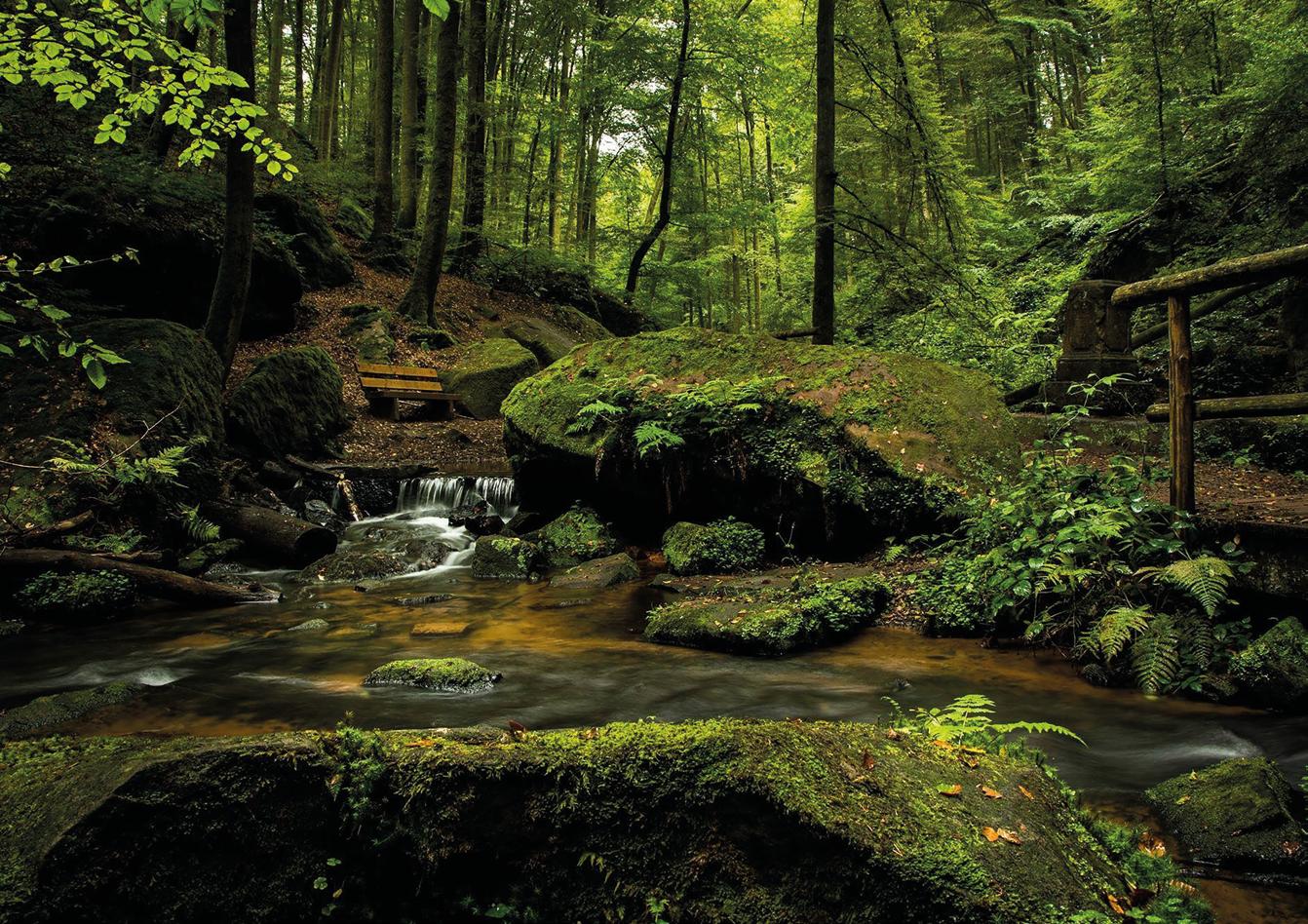
The treatment, cure, and care provided to deal with some evil or disease was known to the Greeks as therapeia. Our word “treatment” is derived from this. It is normal for someone to wonder how they will administer the forest to them if we add it. Will it be in pills, syrups, or serum? It doesn’t harm, so don’t worry. Even with all the humor, individuals who read us need to understand that we lead the individual to a total immersion in Nature, in some type of natural habitat, preferably woods.
Using the forest as therapy means that we will use the benefits provided by Nature as a way to intervene in people’s health. Not only in their physical health, but also in their mental and social health; even, for those who so wish, in their spiritual health.
Each of these people has a specific need, or a specific health problem, or a personal difficulty. Taking into account these personal needs, we will try to find the most concise way to repair it, doing it in a structured way.
The approach of the Forest Baths is always therapeutic. The professionals who are dedicated to the Forest Baths are trained to be able to collaborate with guarantees with health professionals, making available to the general public, to the Institutions, all the set of interventions that we have.
What are we talking about then? We are talking about promoting healthy lifestyles, those that improve our quality of life. We are talking about relieving the day-to-day stress in which we live. We are also talking about preventing or dealing with burnout, that which is caused by work and production. Finally, we talk about more specific interventions on the health of any person, always under supervision.
Los griegos llamaban therapeia al remedio, al tratamiento, a los cuidados para hacer frente a algún mal, a alguna enfermedad. De ahí viene nuestra palabra terapia. Si le añadimos lo del bosque es normal que alguien pueda pensar, ¿cómo me van a dar el bosque?, ¿en pastillas, jarabes, lo tendrán en suero? No se preocupen, no duele. Bromas aparte, lo que tienen que saber los que nos lean es que llevamos a la persona a realizar una inmersión completa, mente y cuerpo, en la Naturaleza, en algún tipo de entorno natural, especialmente los bosques.
Usar el bosque como terapia significa que utilizaremos los beneficios que procuran la Naturaleza, como una forma de intervenir en la salud de las personas. No solo en su salud física, también en la mental y en la social; incluso, para los que así lo deseen, en la salud espiritual. Cada una de esas personas tiene una necesidad específica, o un problema de salud concreto, o alguna dificultad personal. Teniendo en cuenta estas necesidades personales trataremos de buscar la forma más concisa de repararlo, haciéndolo de manera estructurada.
El enfoque de los Baños de Bosque es siempre terapéutico. Los profesionales que nos dedicamos a los Baños de Bosque estamos formados para poder colaborar con garantías con los profesionales de salud, poniendo a disposición del público en general, de las Instituciones, todo el conjunto de intervenciones que tenemos.
¿De qué estamos hablando entonces? Hablamos de promover estilos de vida saludables, de eso que mejoran nuestra calidad de vida. Hablamos de aliviar el estrés del día a día en el que vivimos. Hablamos también de prevenir o hacer frente al burnout, ése que nos provoca el trabajo y la producción. Hablamos, por último, de intervenciones más específicas sobre la salud de cualquier persona siempre bajo supervisión.
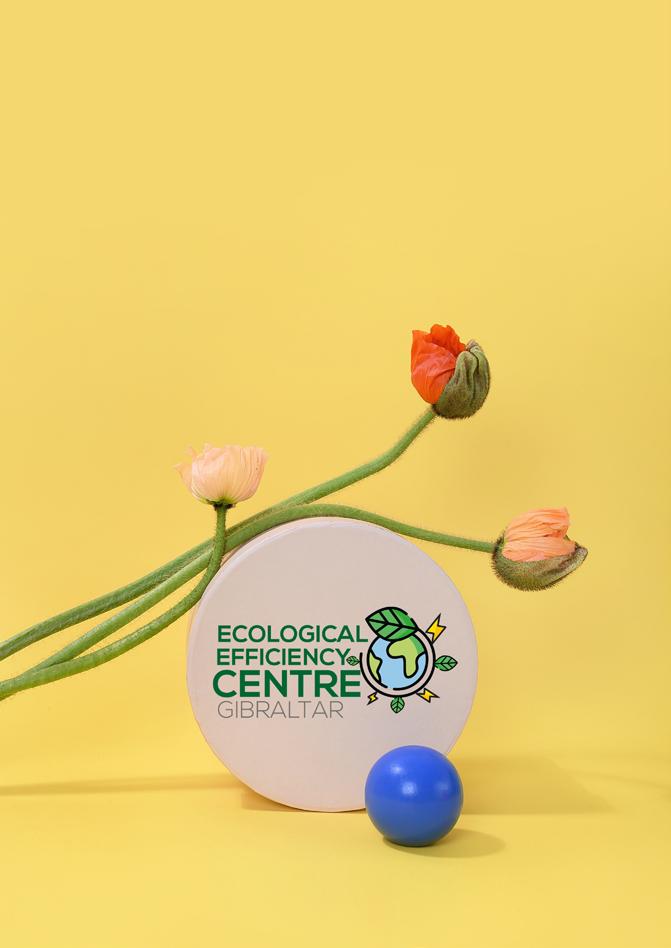




17th Feb 10am Rosia Bay - 100th Great Gibraltar Beach Clean.
22nd May - World Oceans Day School Competition
Entries Submission Deadline.
8th June - Wear Blue for Nautilus Fundraising Day.
9th June - World Oceans Day School Competition.
9th June - Nautilus Flag Day.
24th - 28th July - Marine Biology Kids Summer Camp (Ages 7 to 11).
18th September - Gibraltar Sustainable Awards
Entries Submission Deadline.
5th October - Gibraltar Sustainable Awards Prizegiving Ceremony.

Become a Citizen Scientist by contributing invaluable data to innovative research. Download NEMO Download ORCINUS Donations to the charity help support the educational Marine Science outreach
